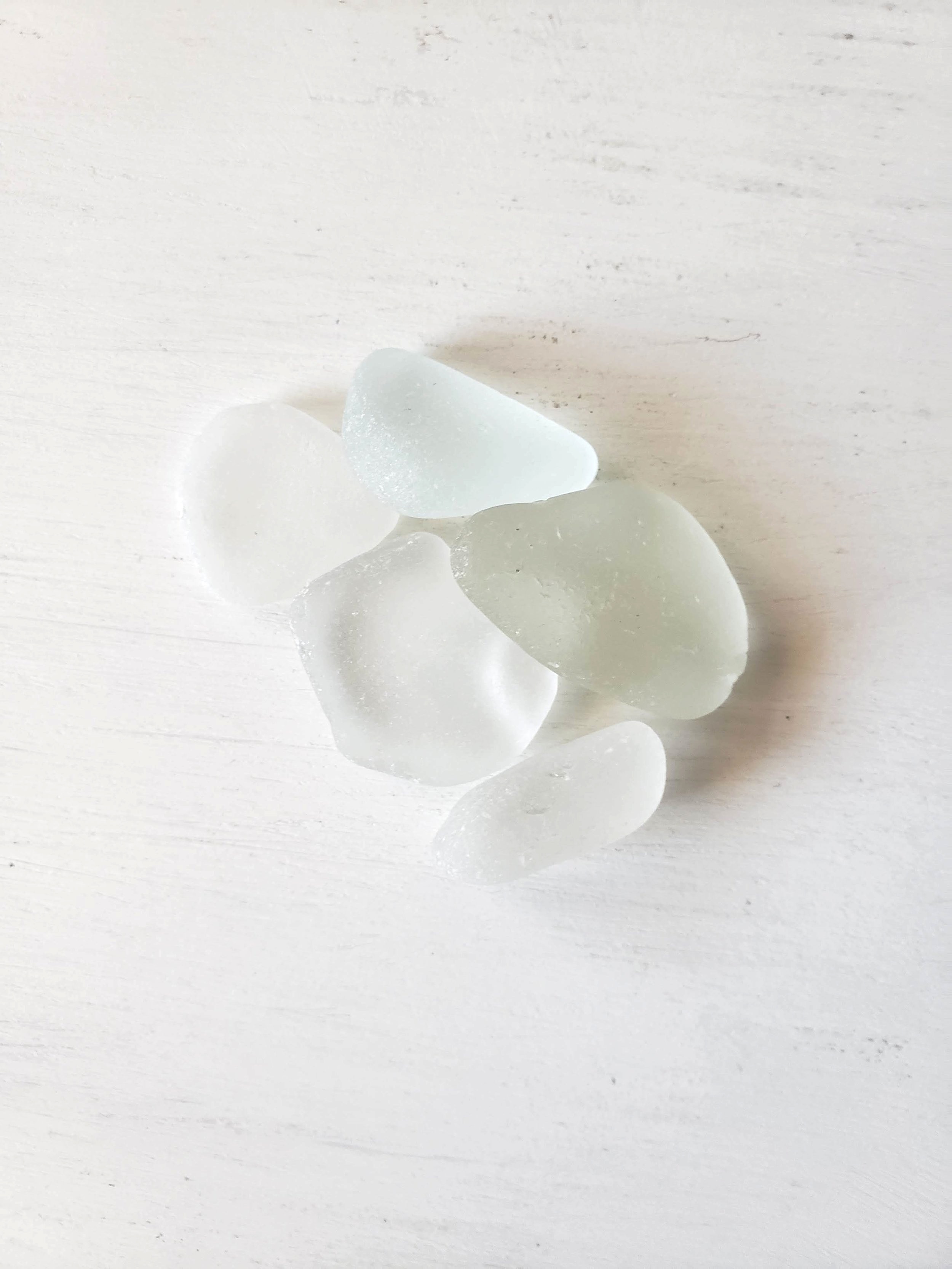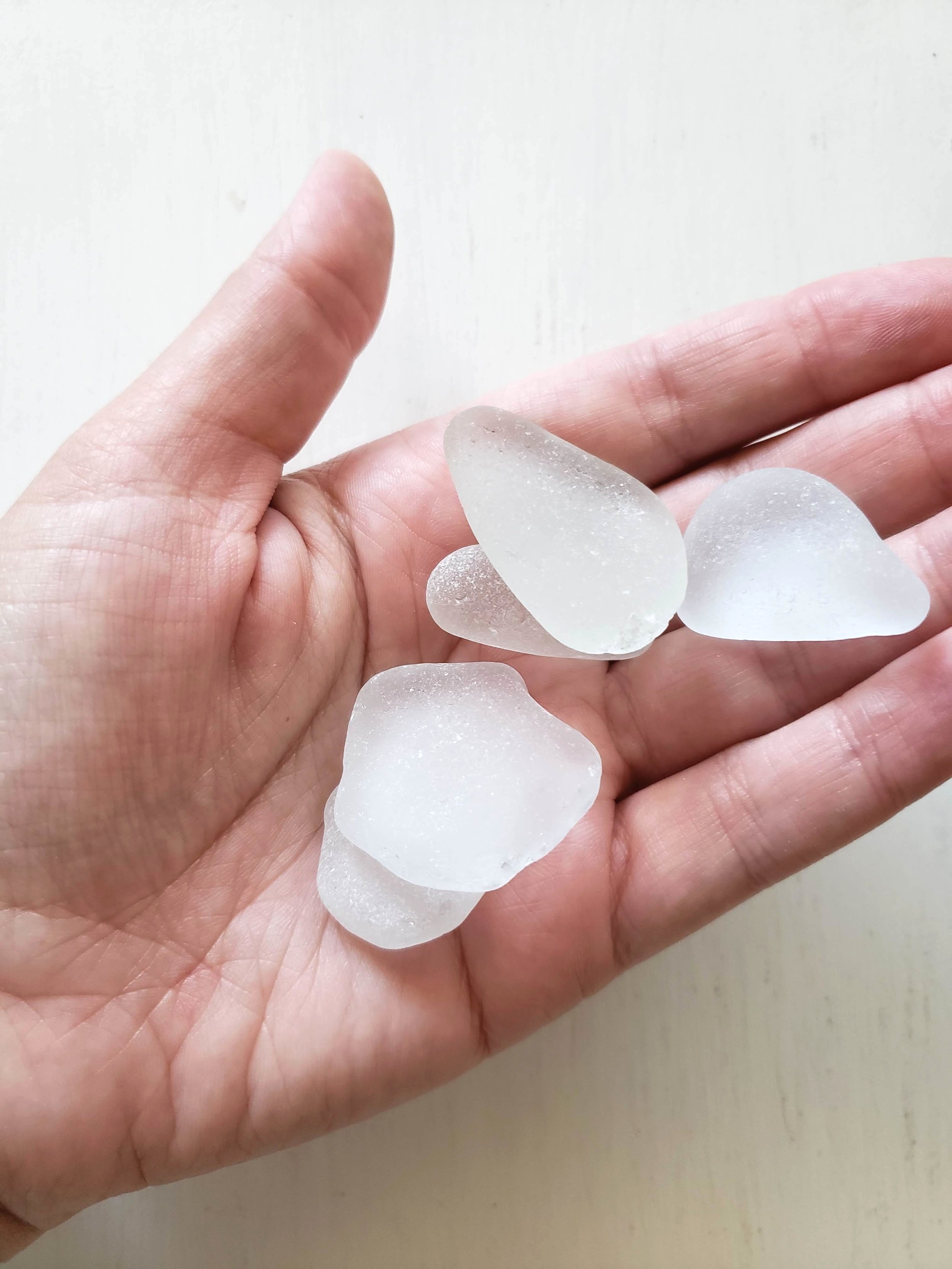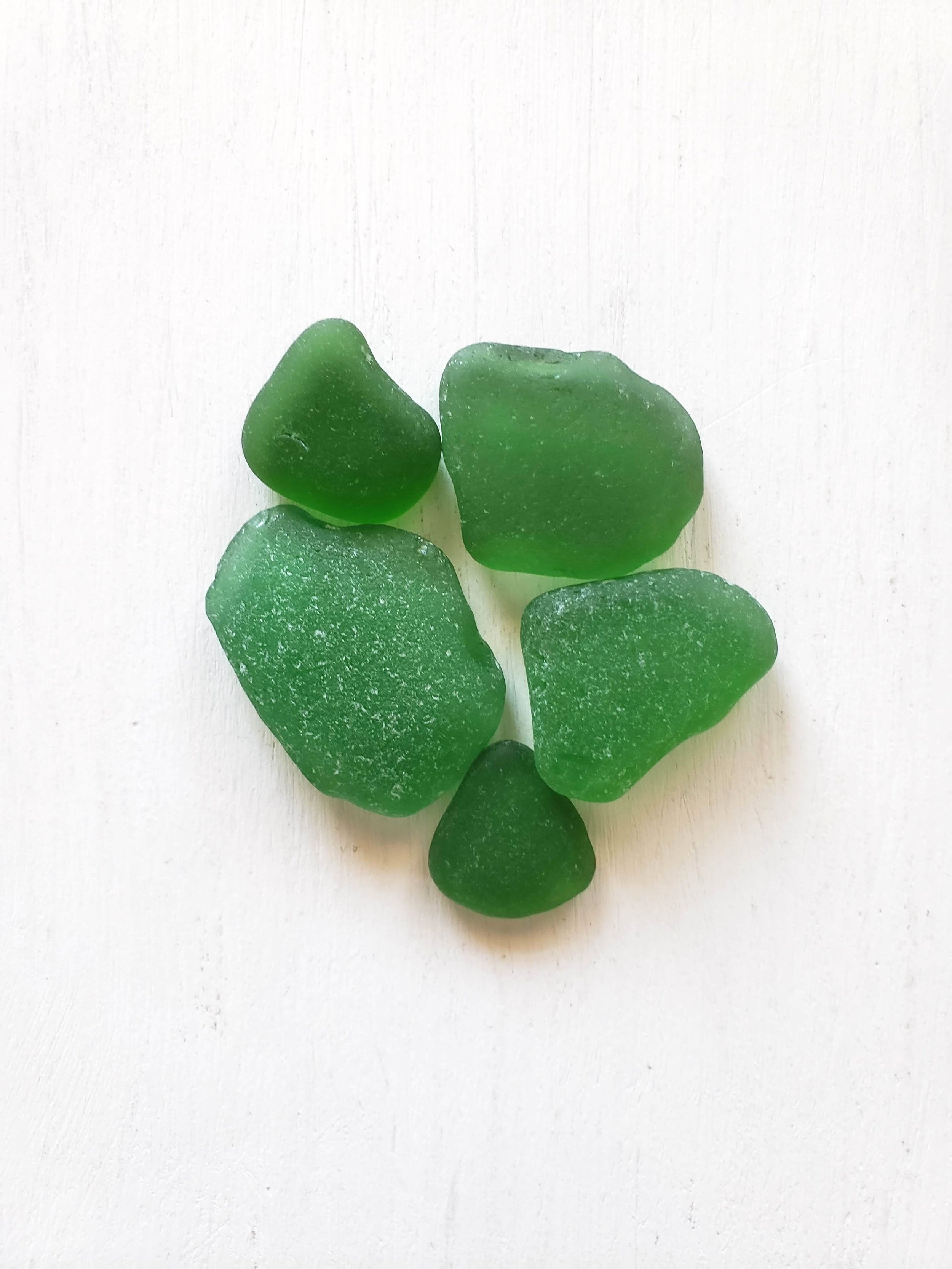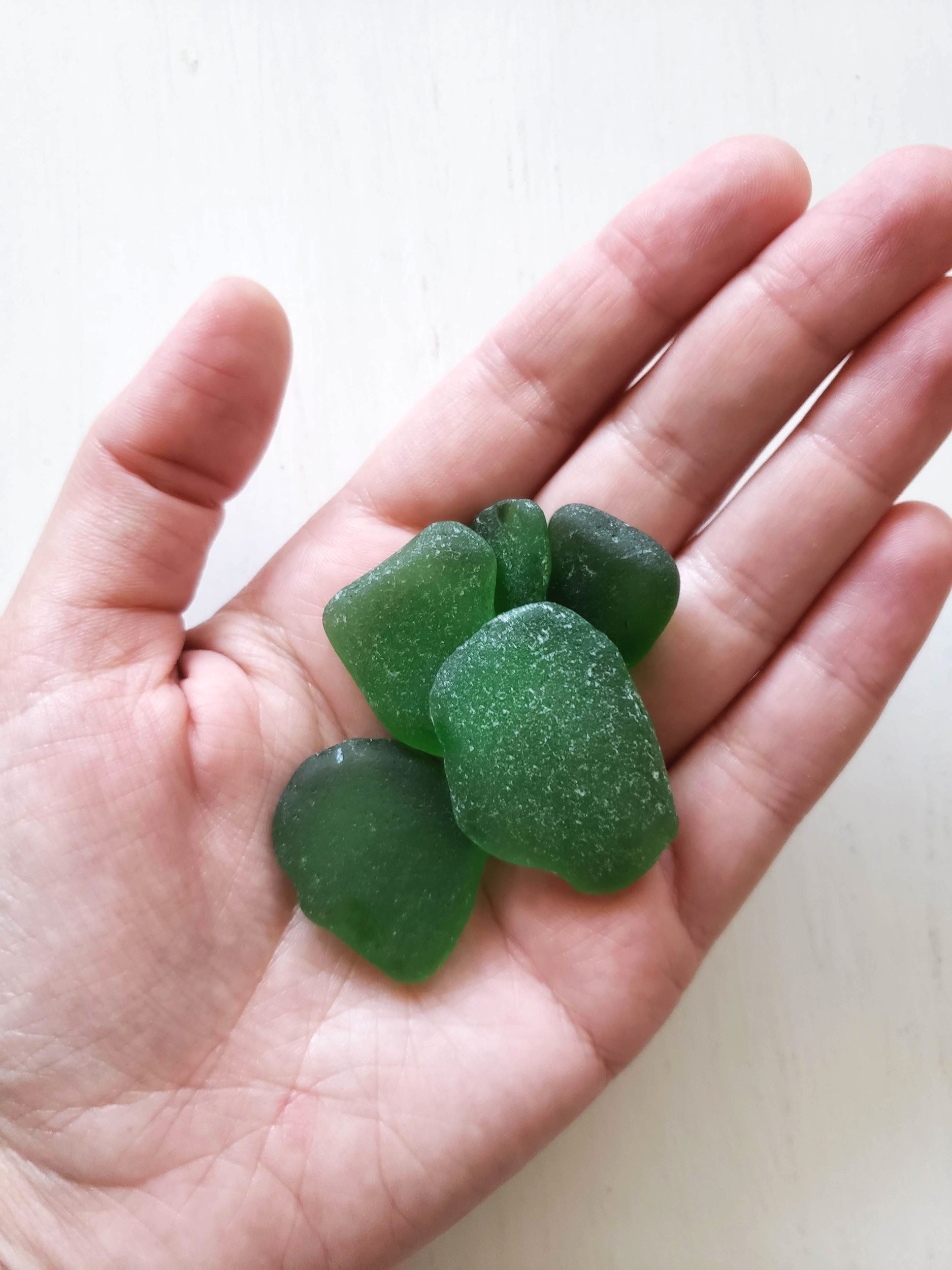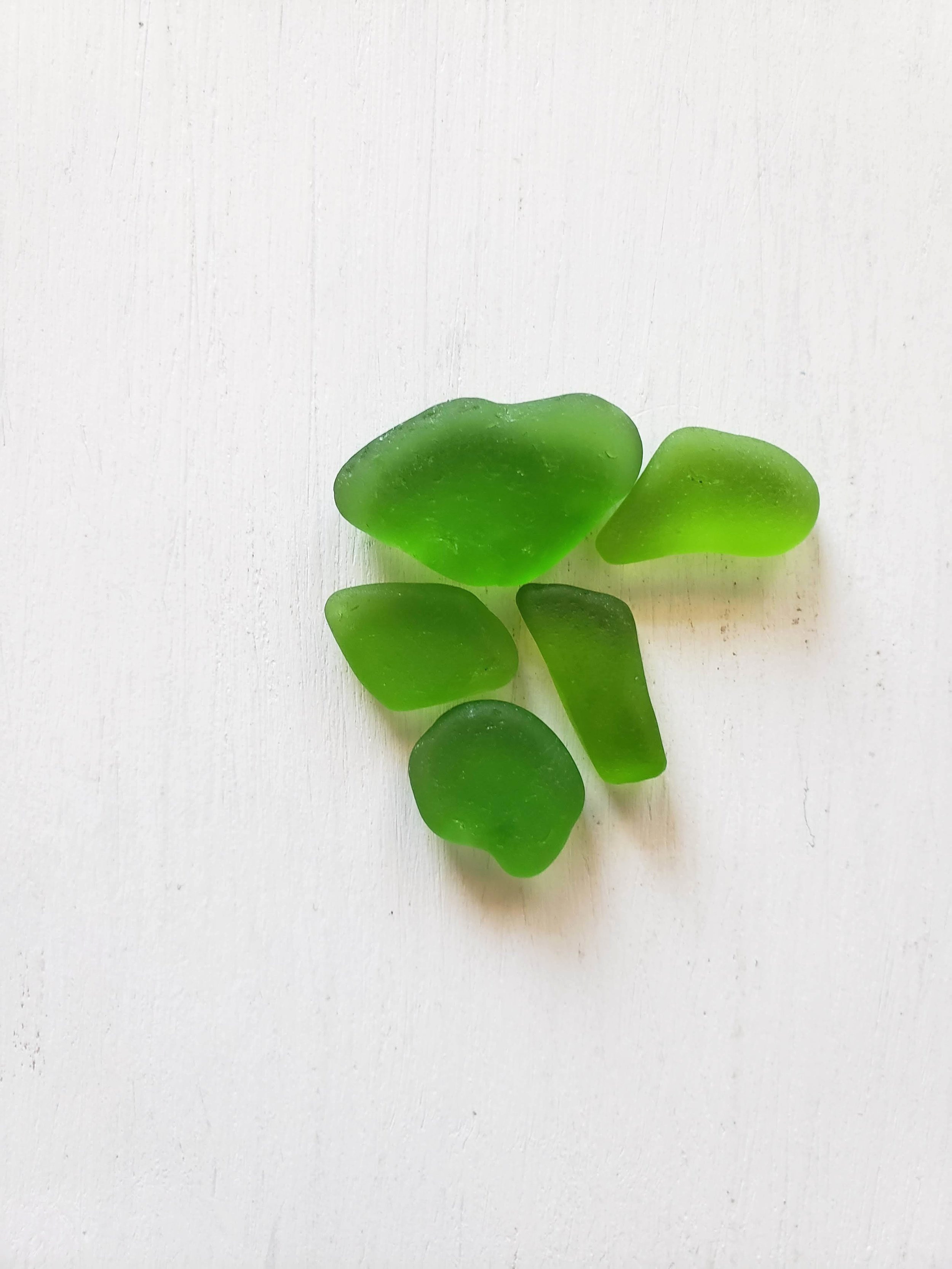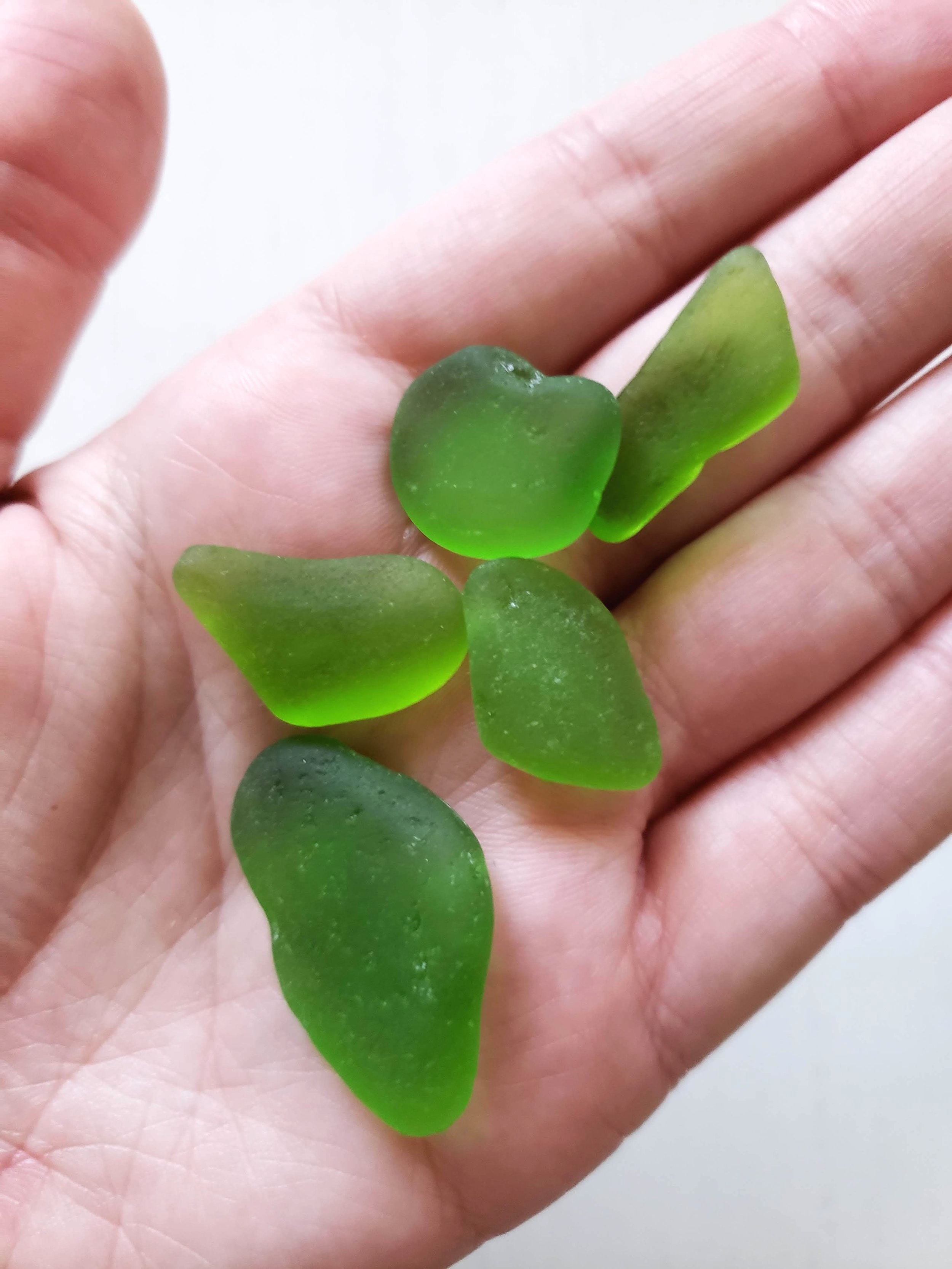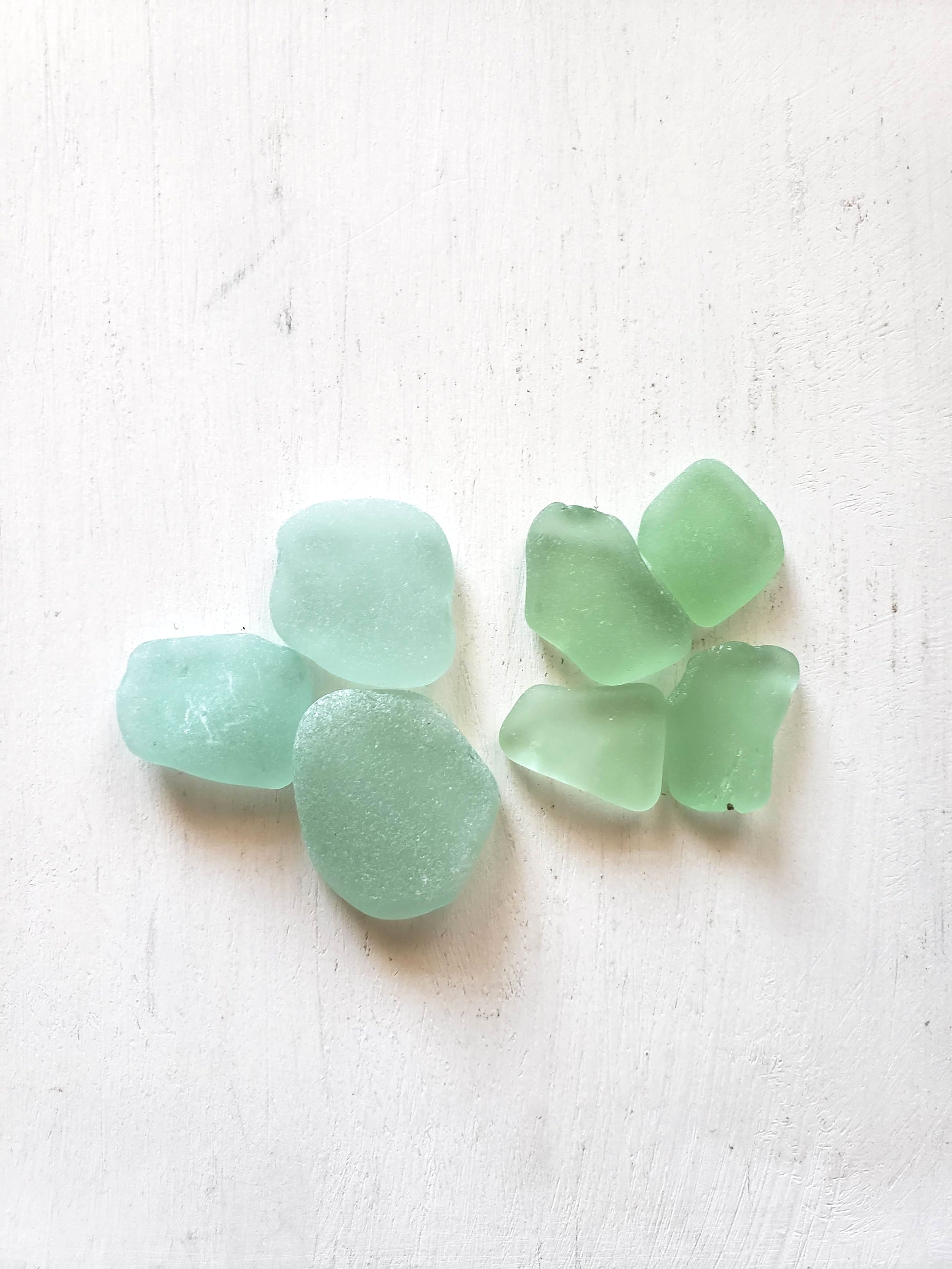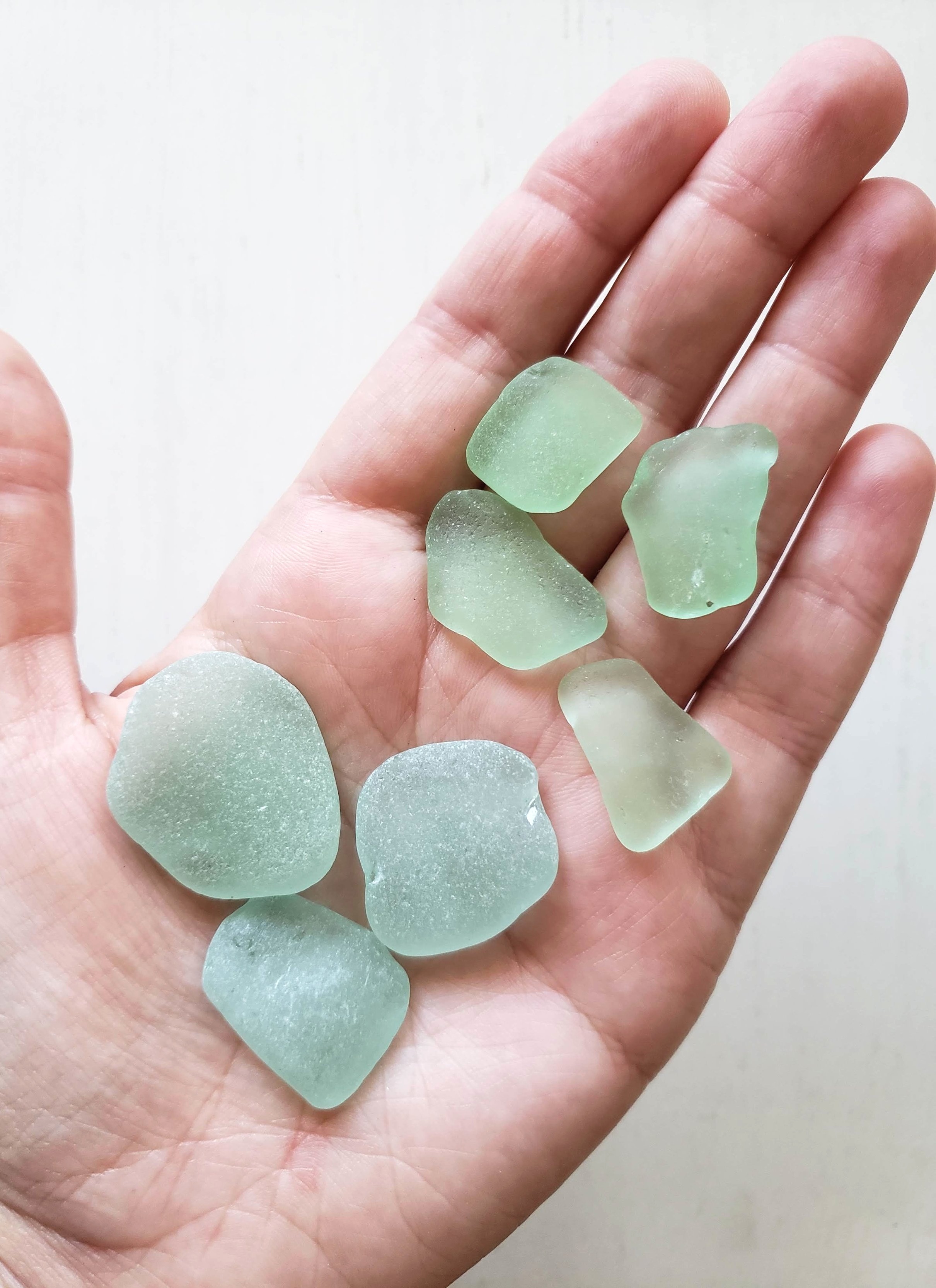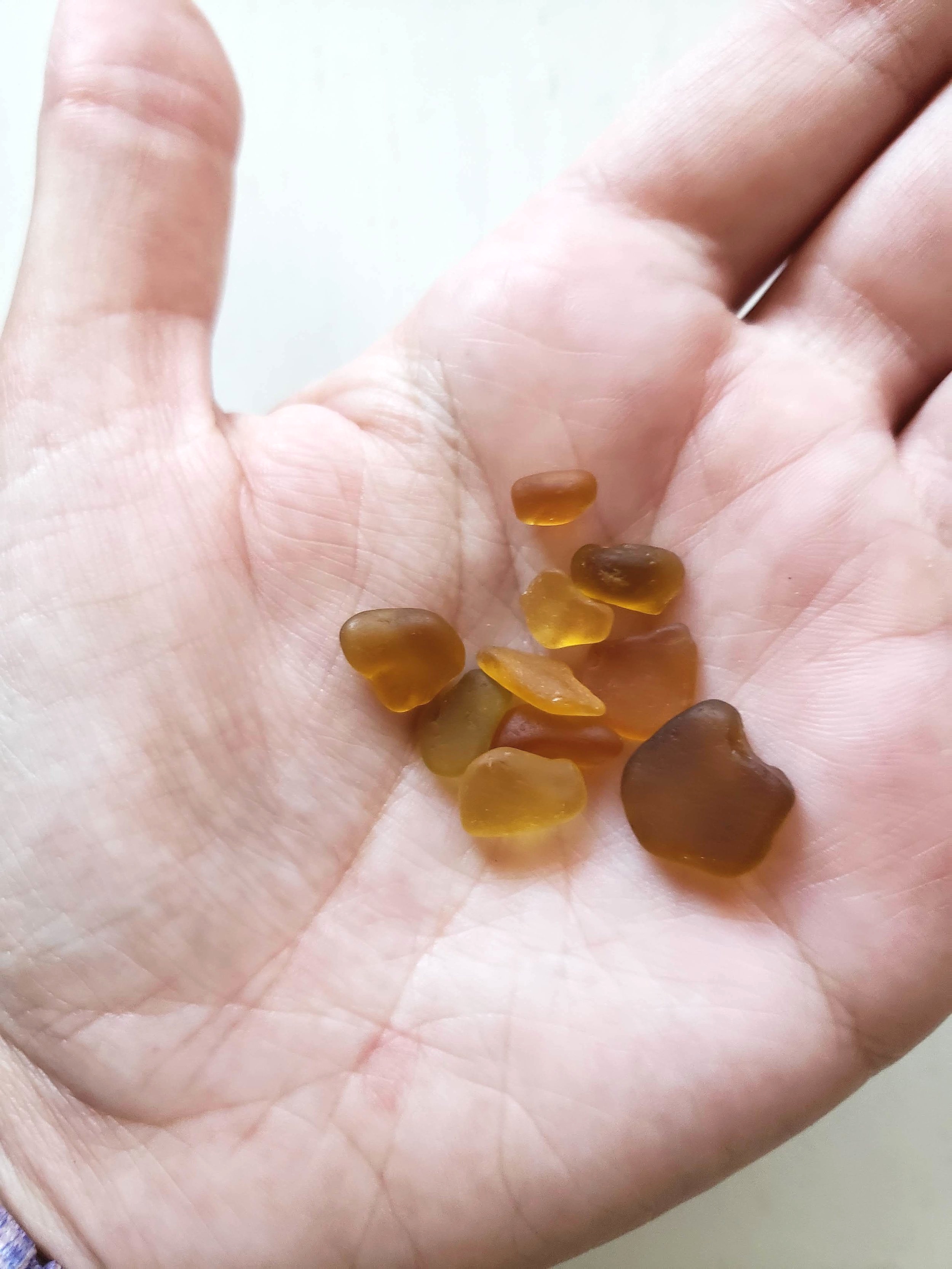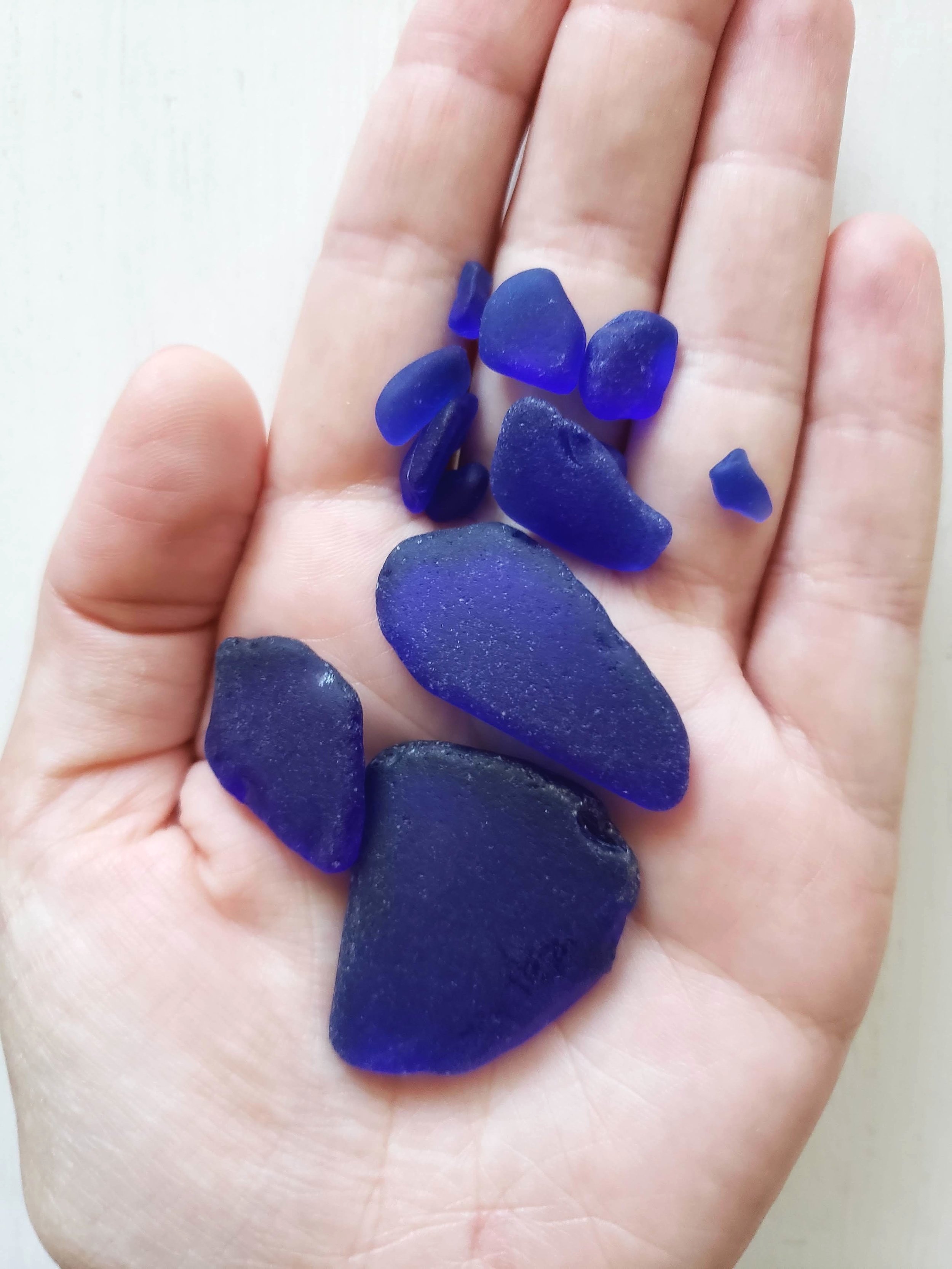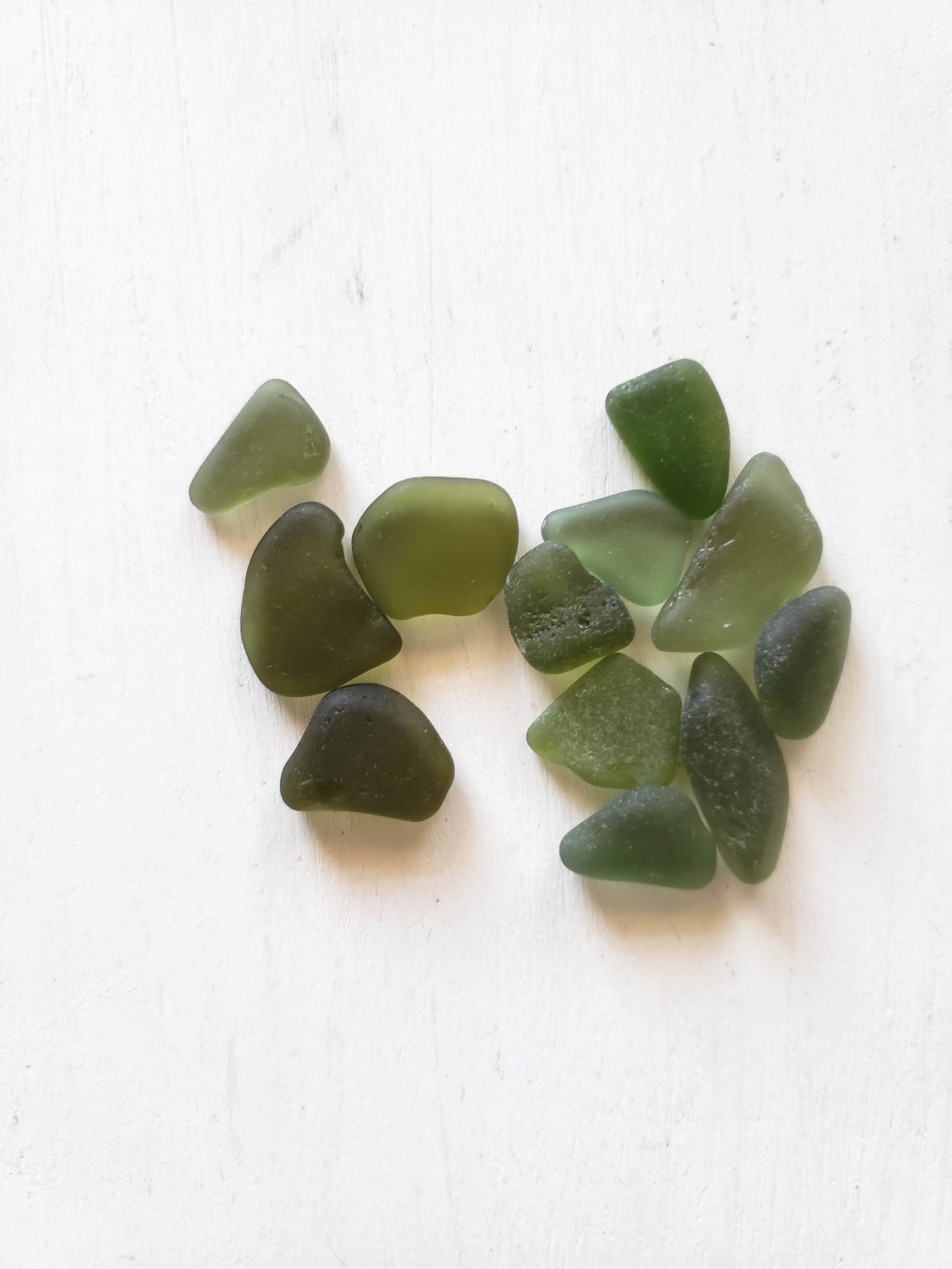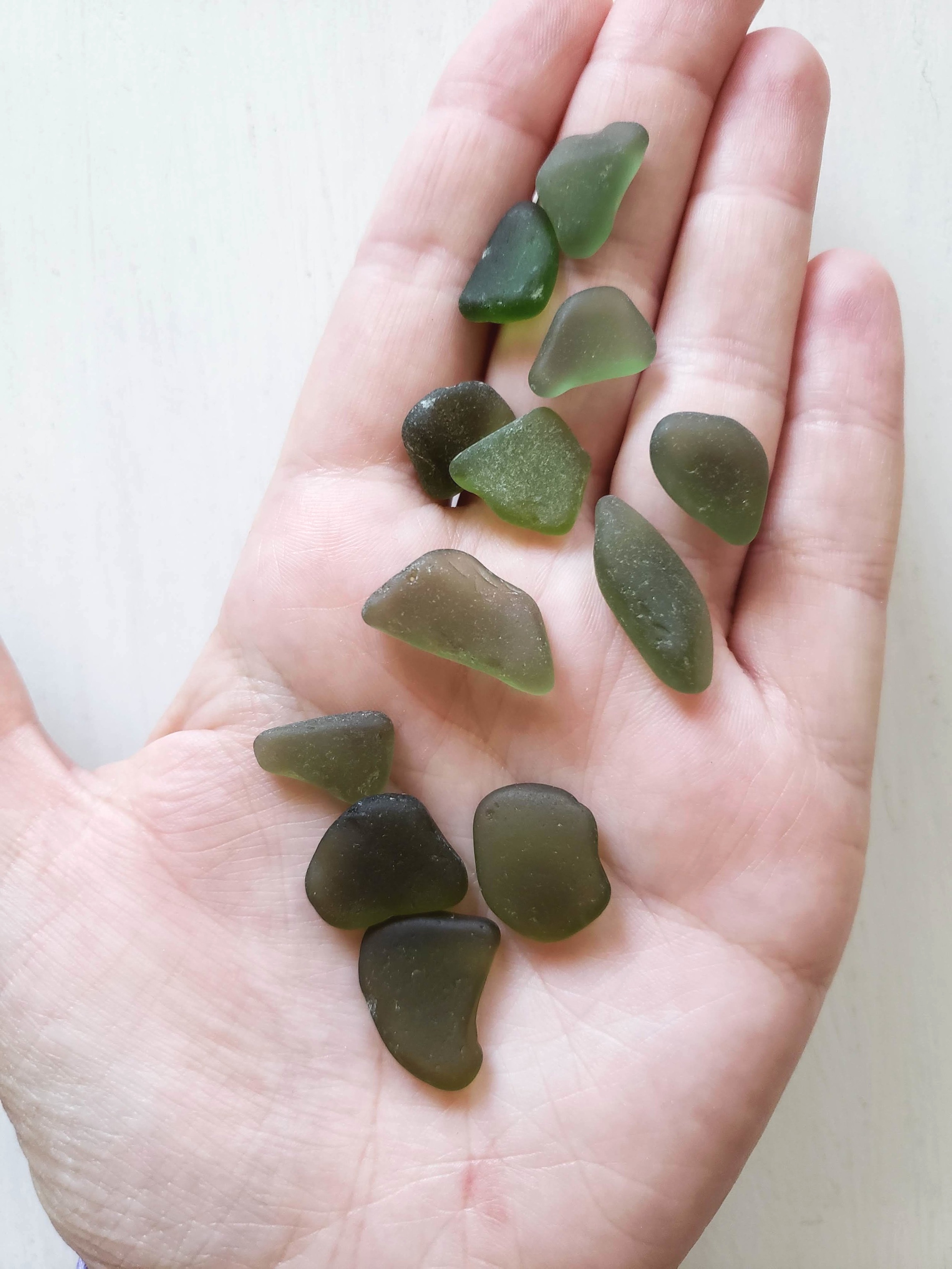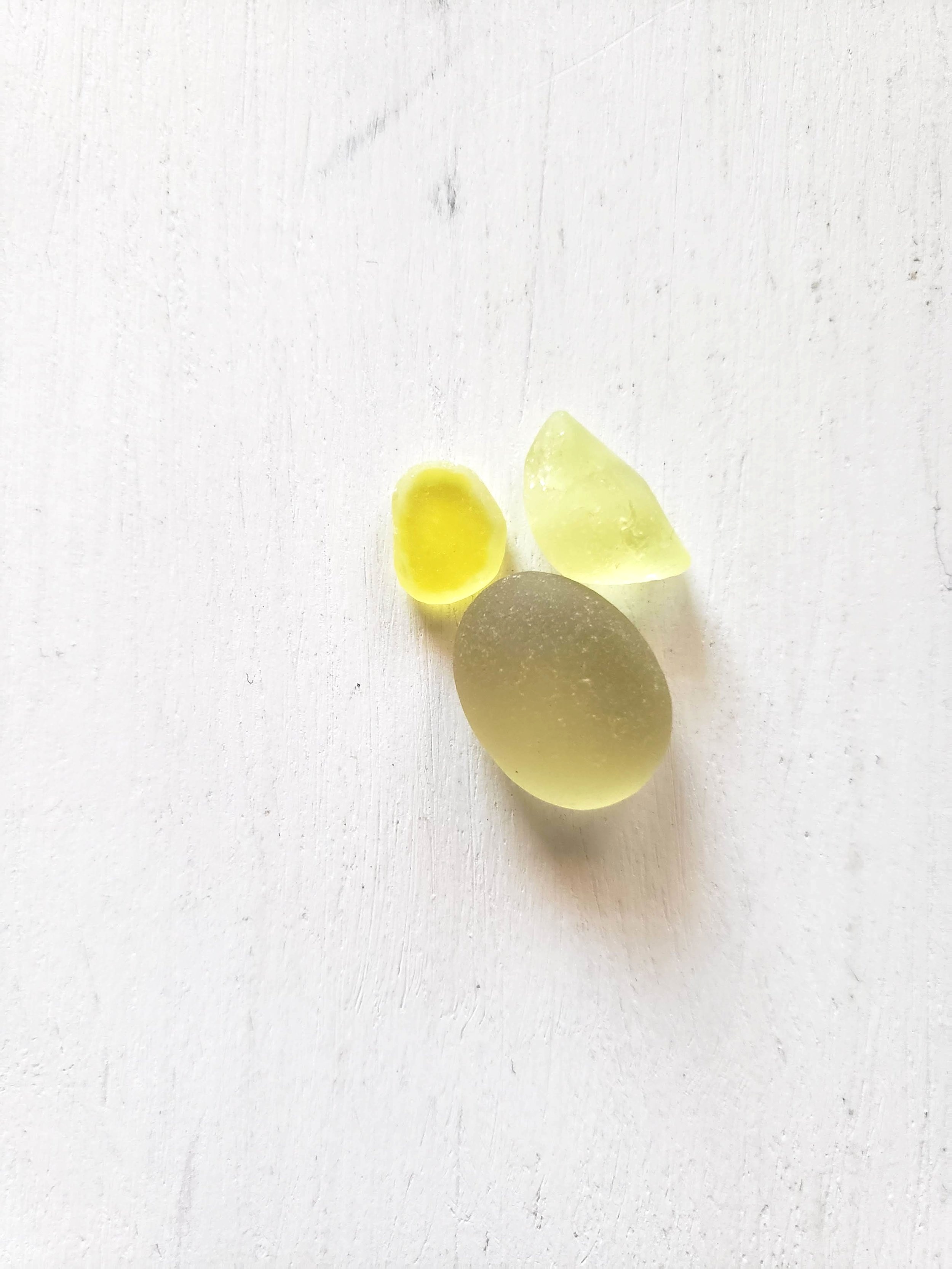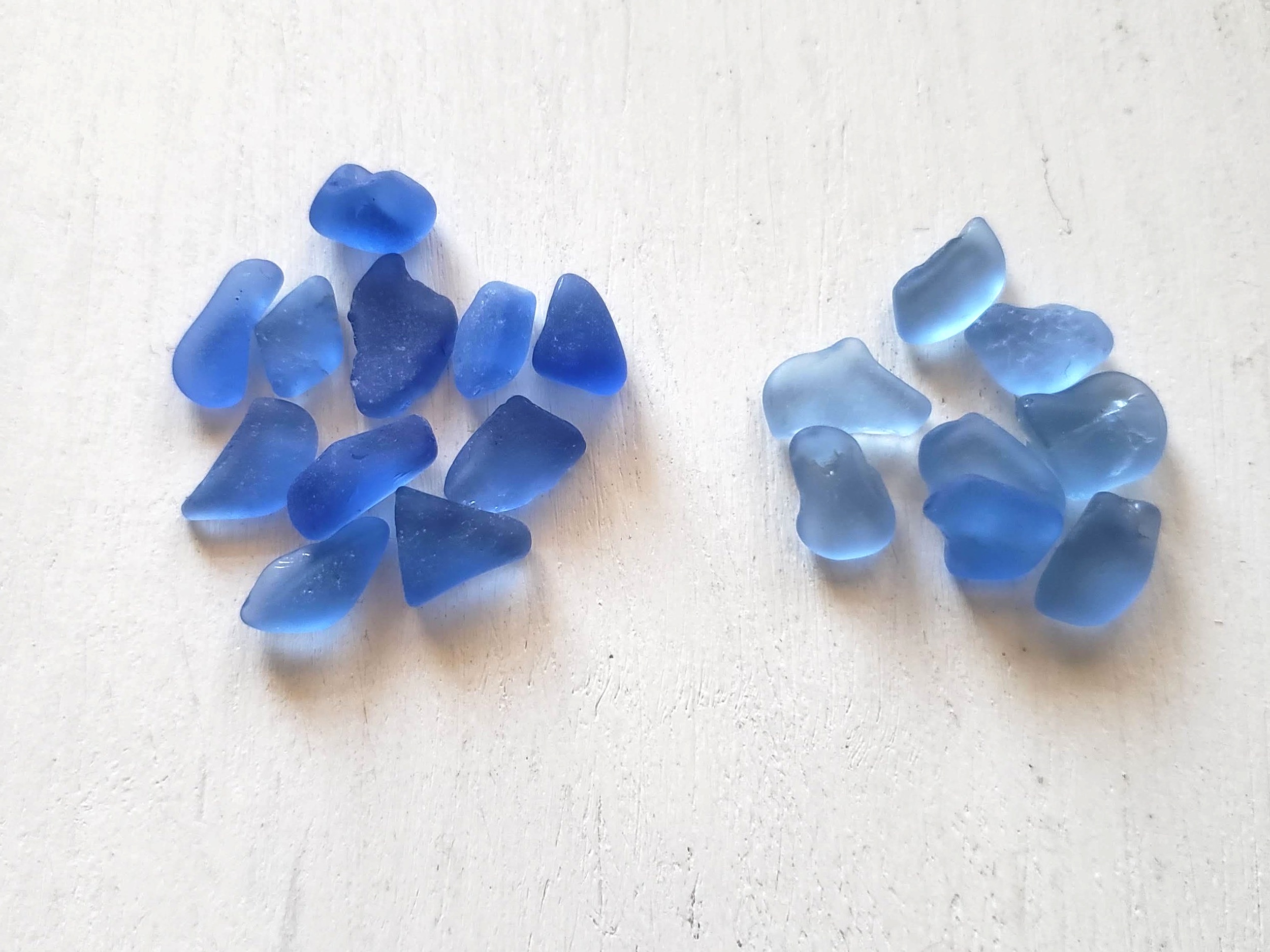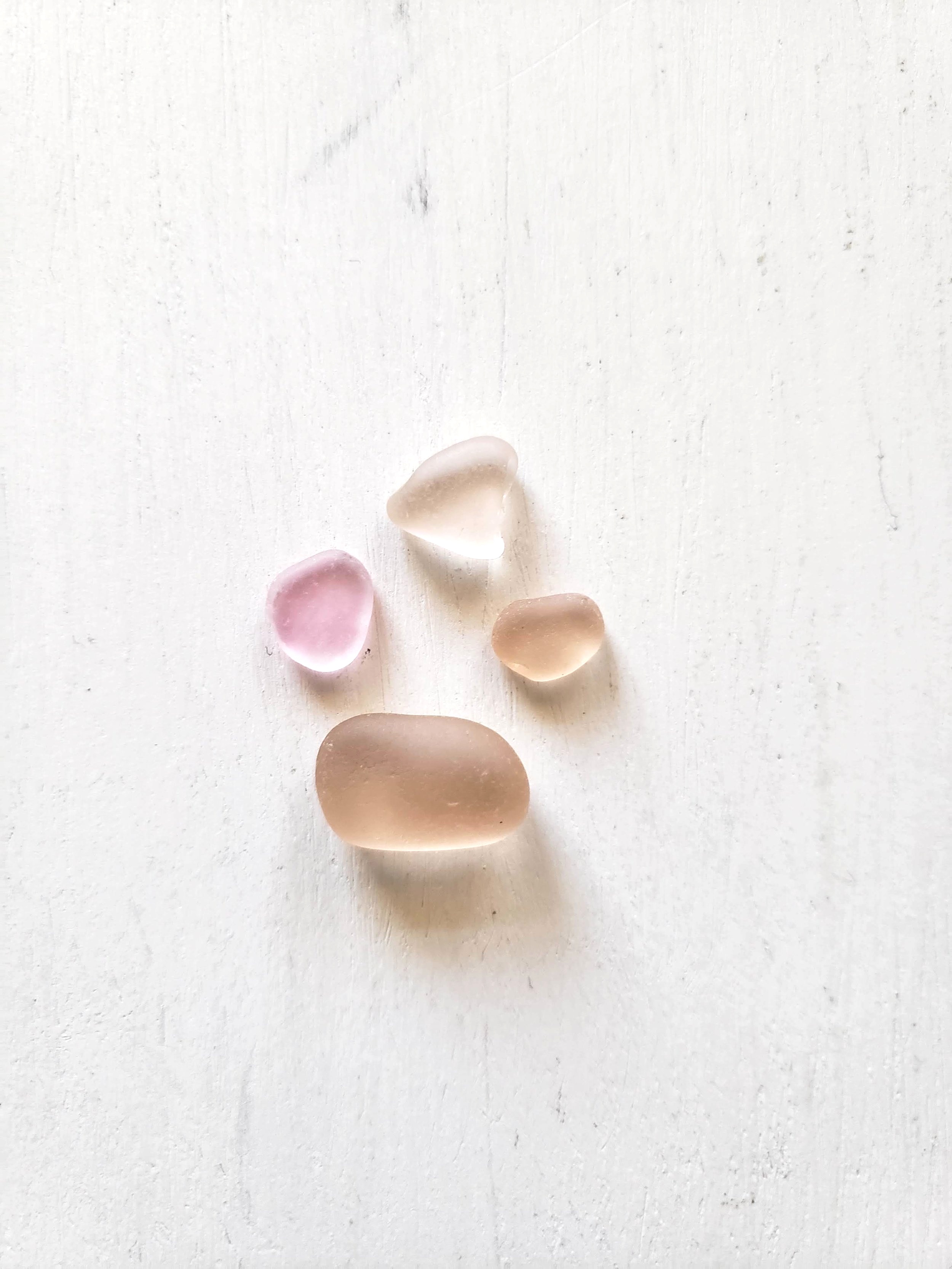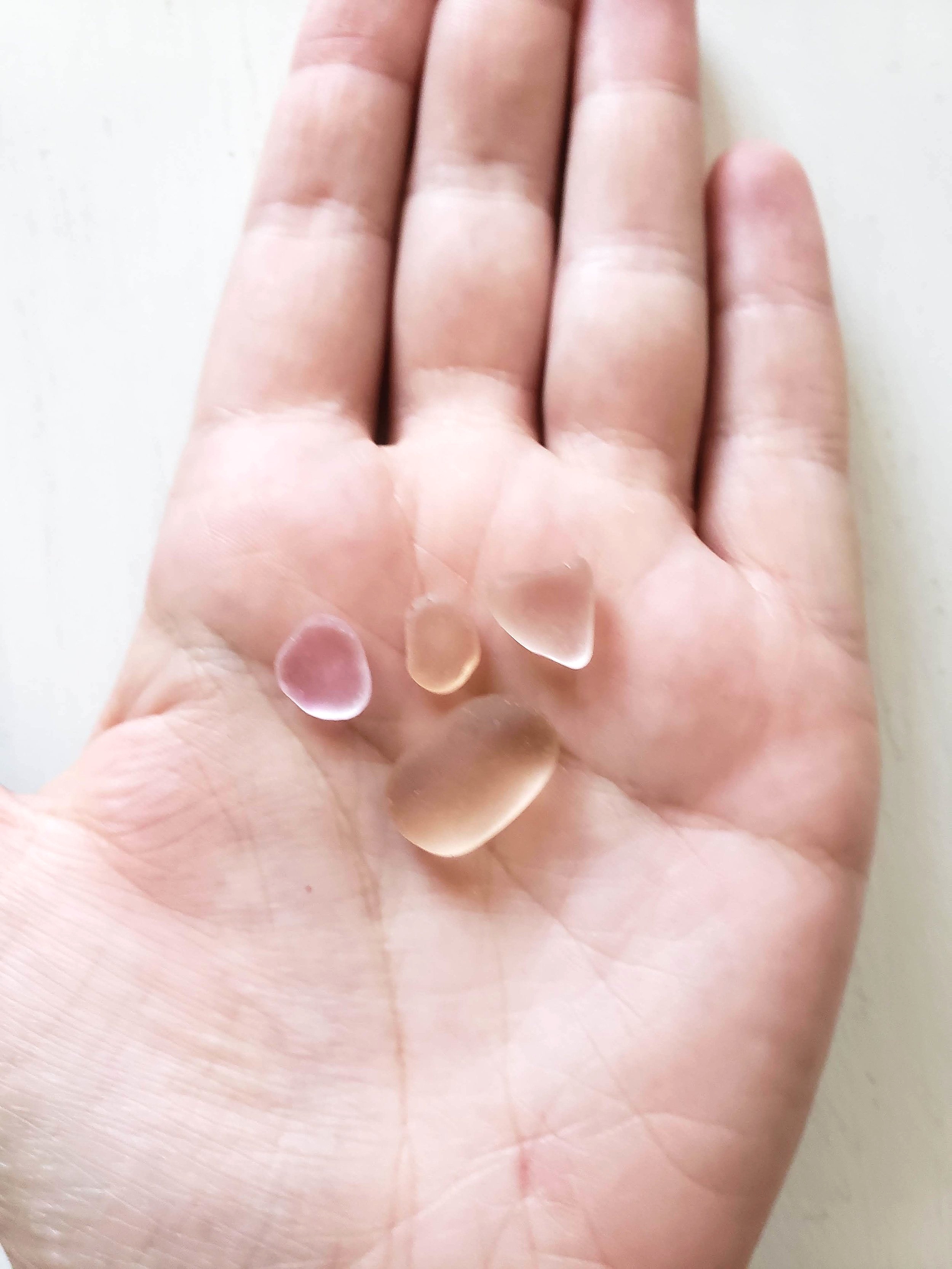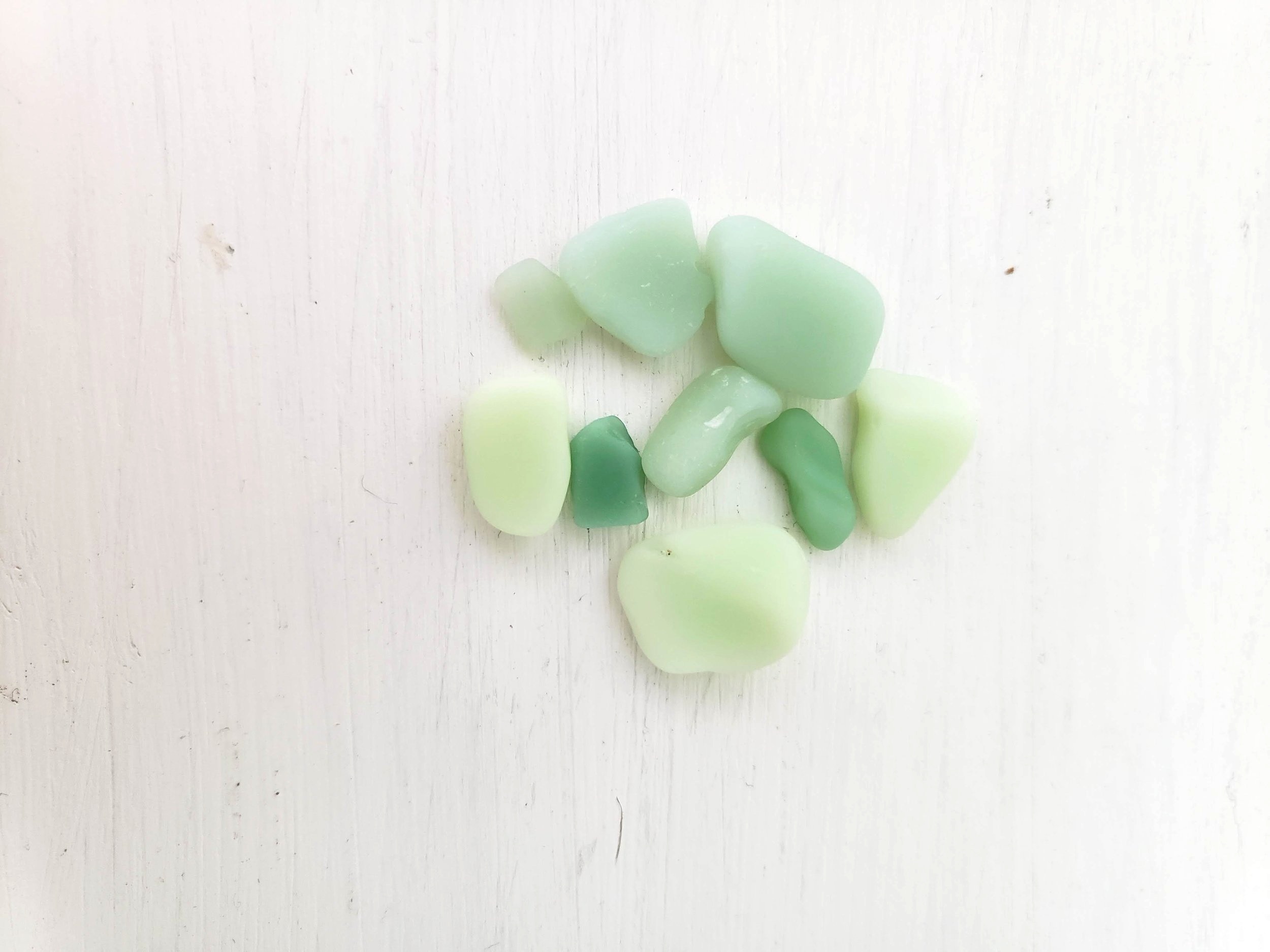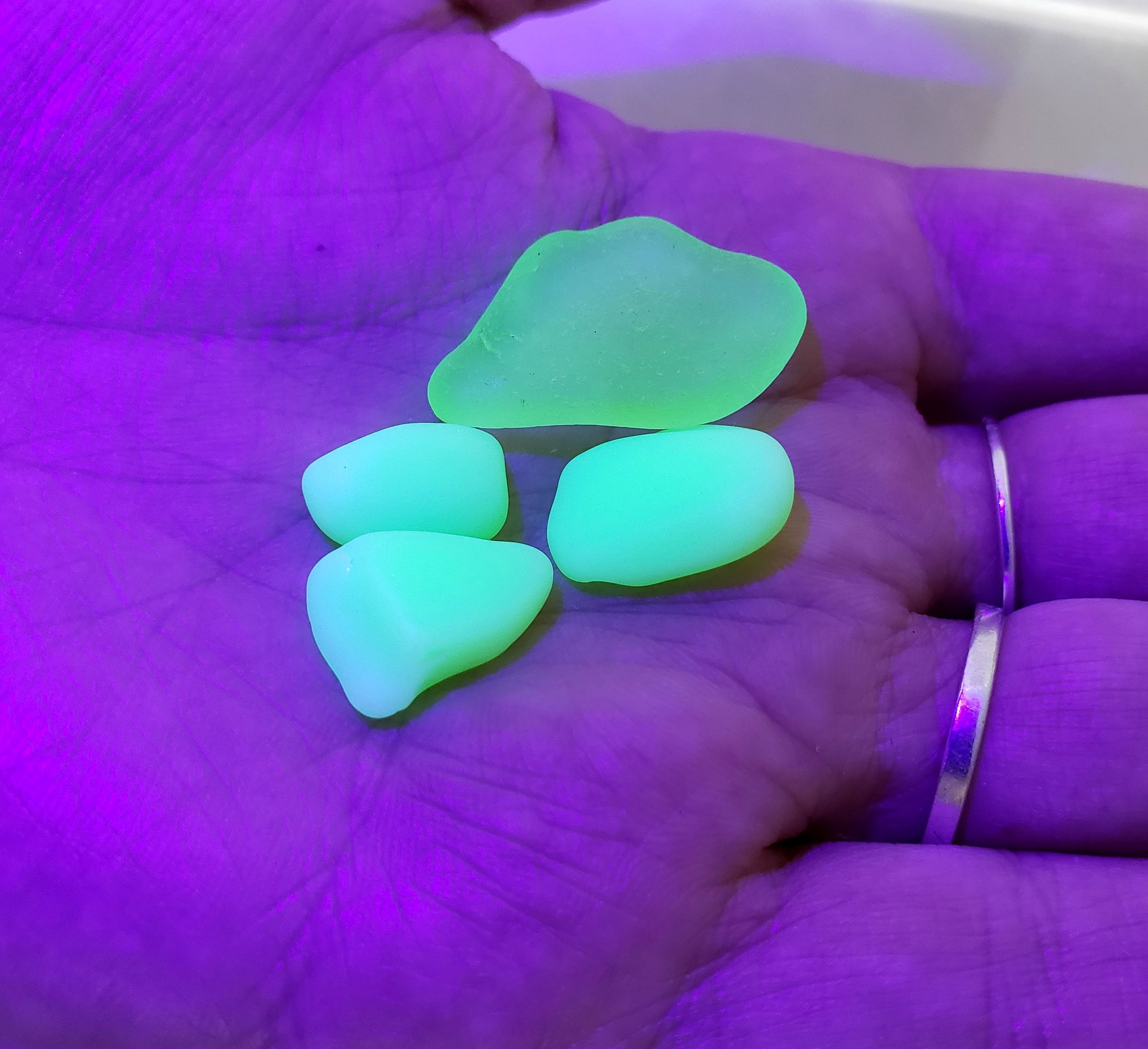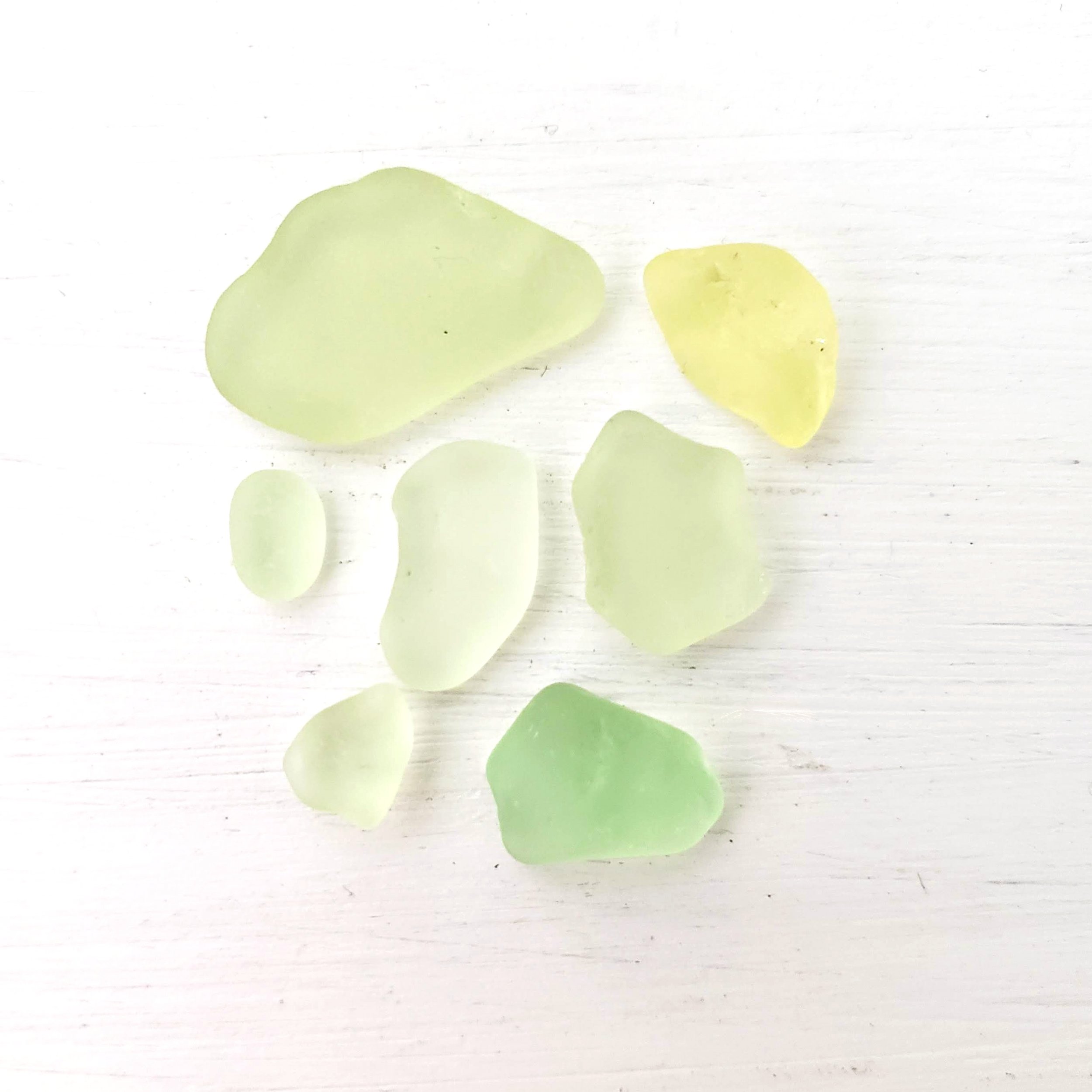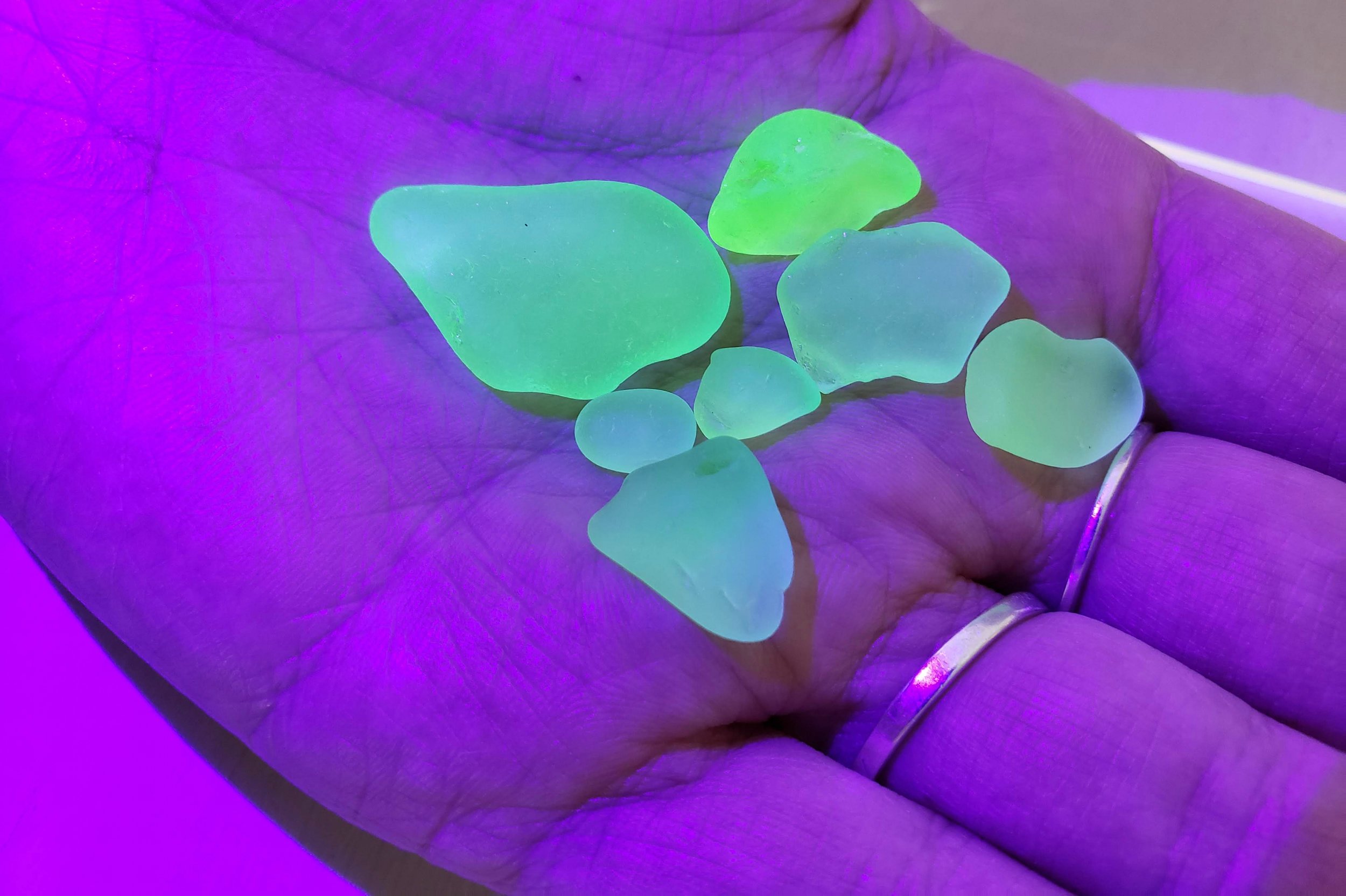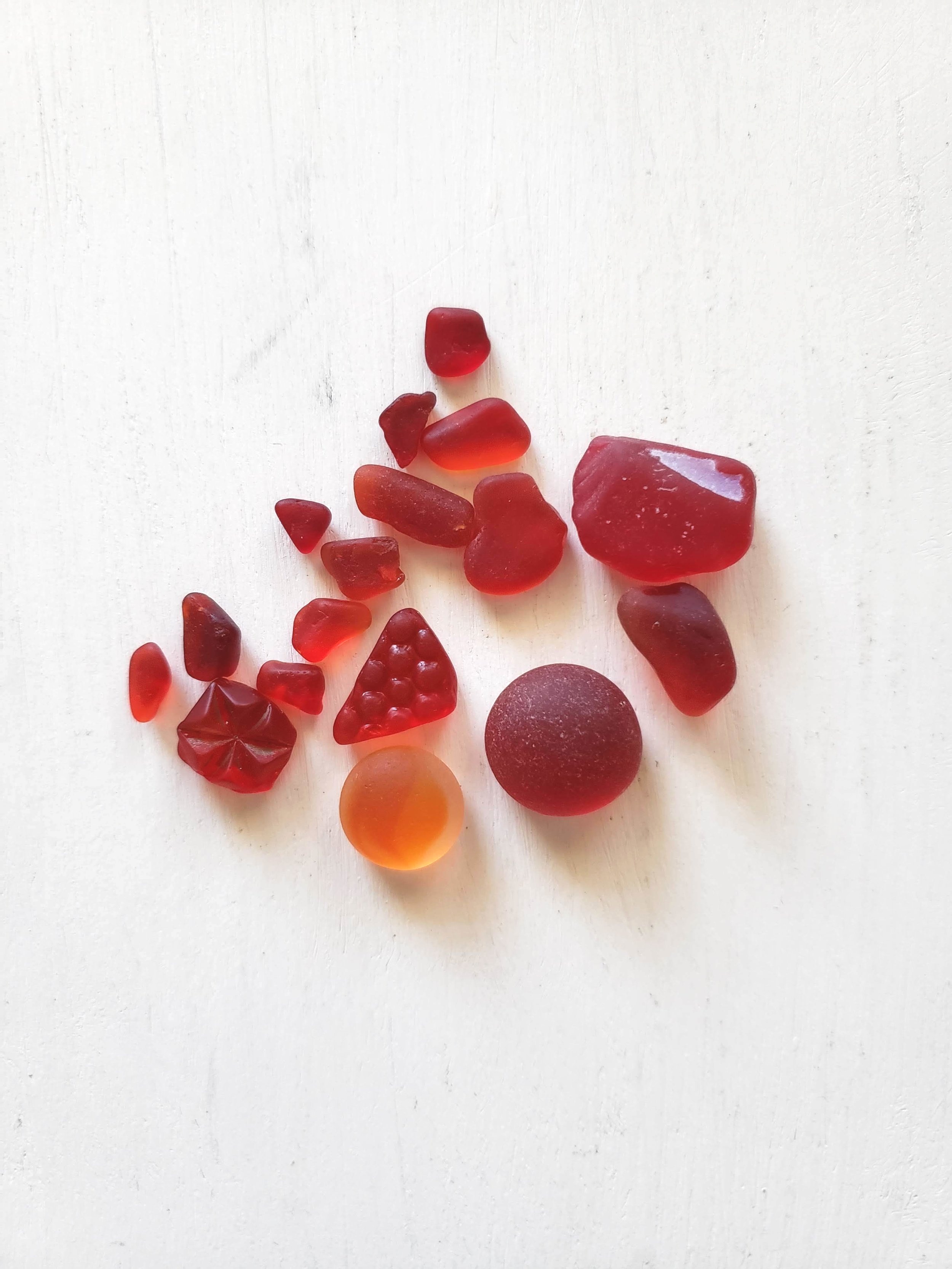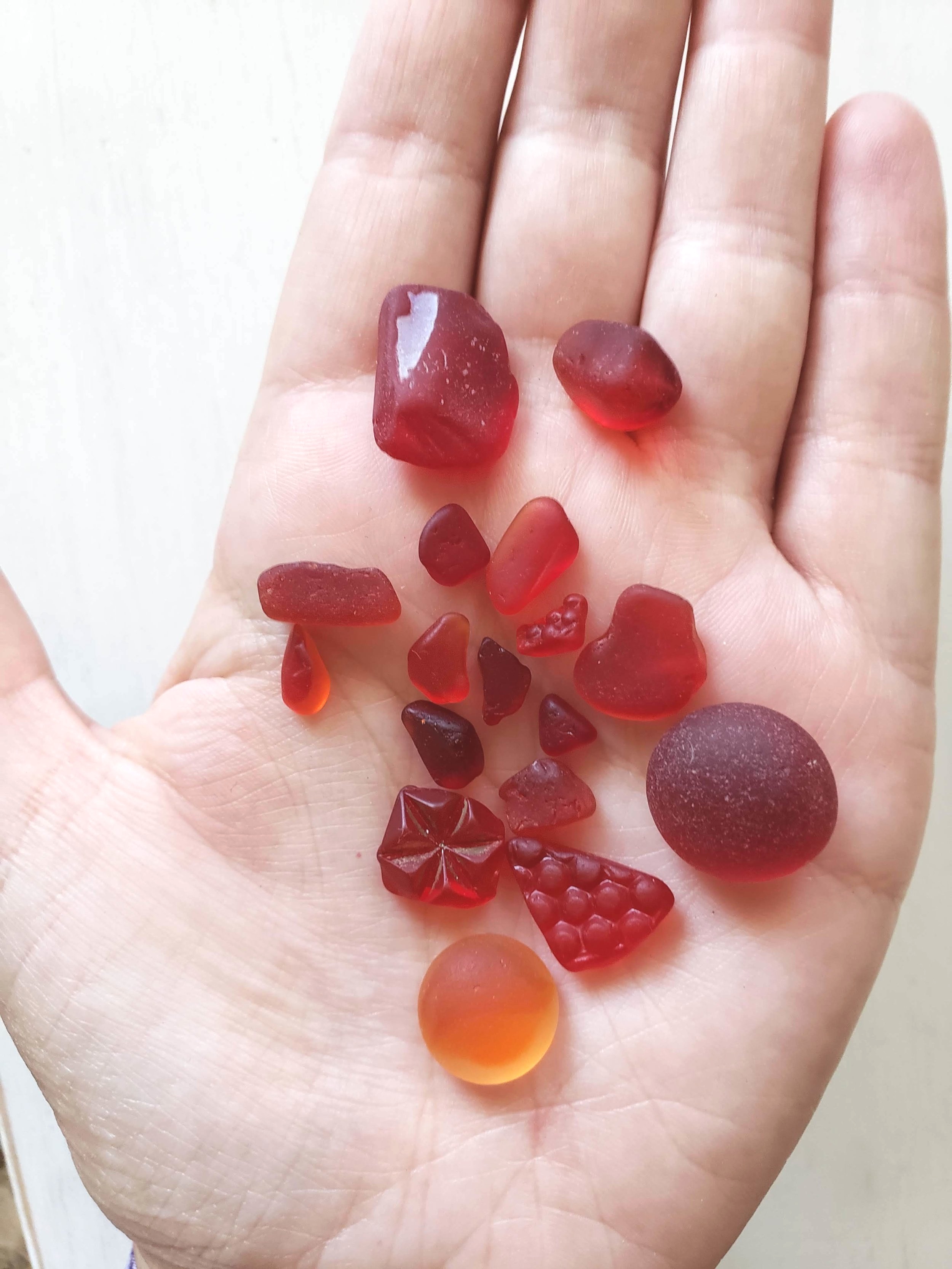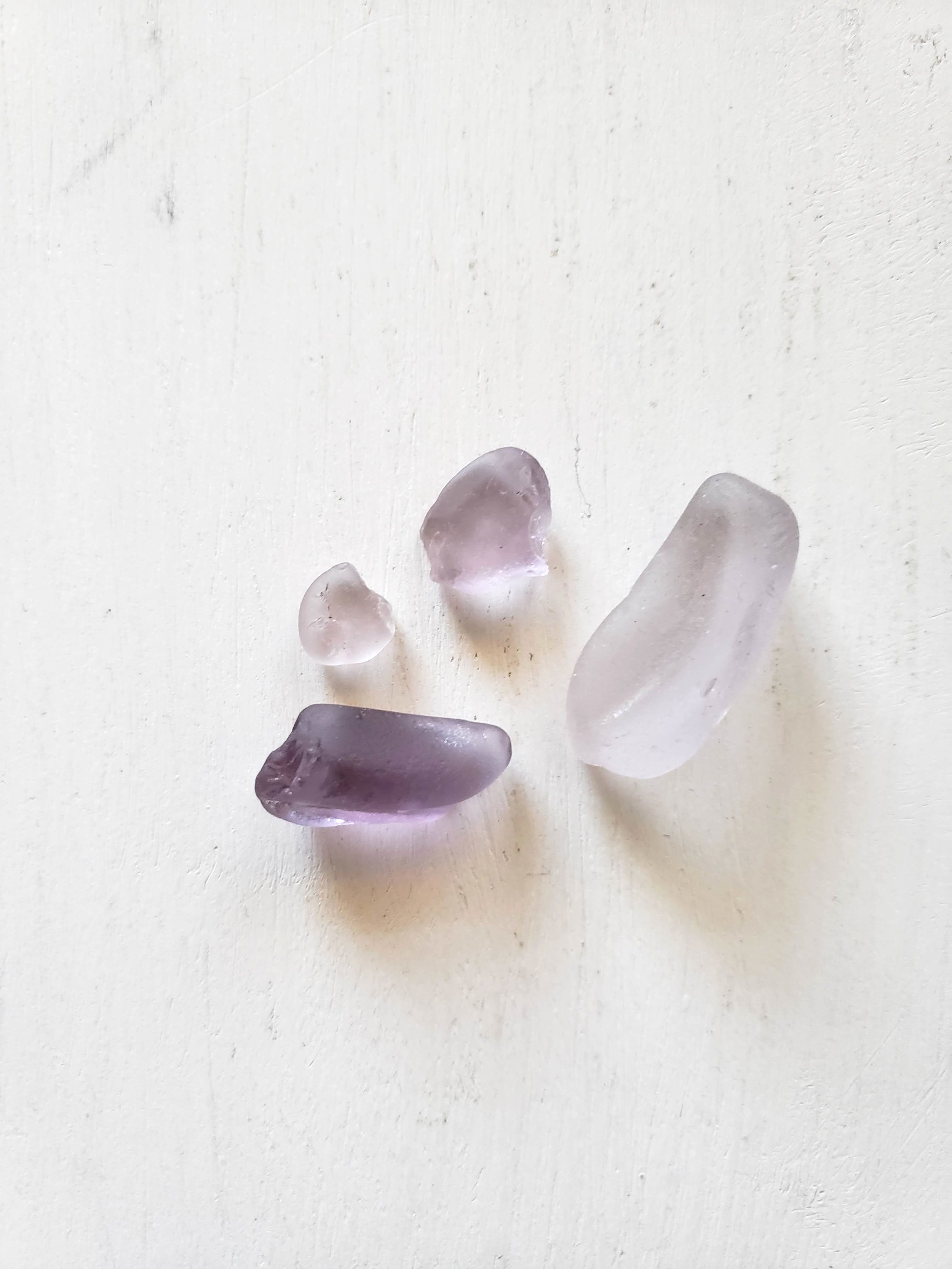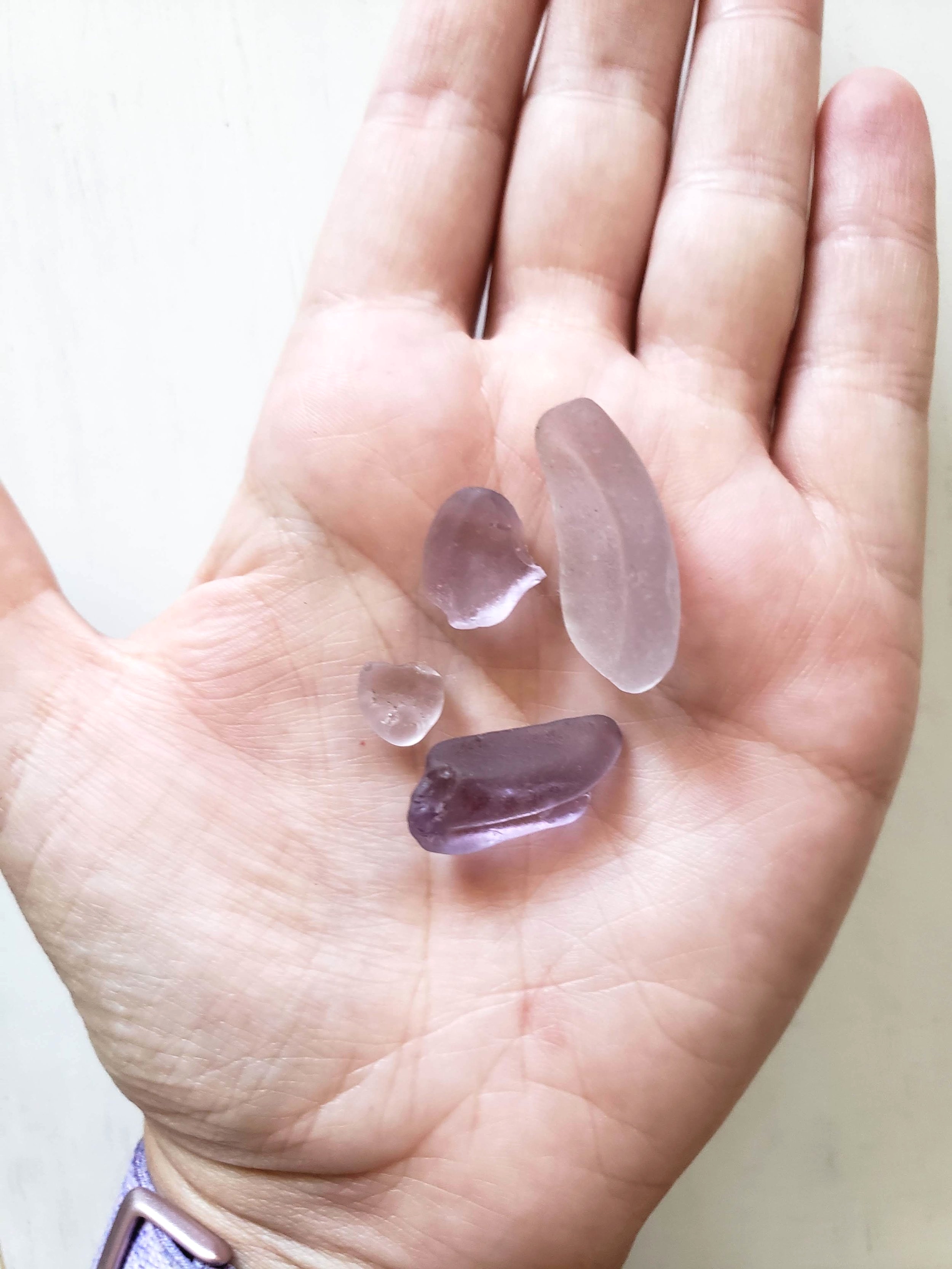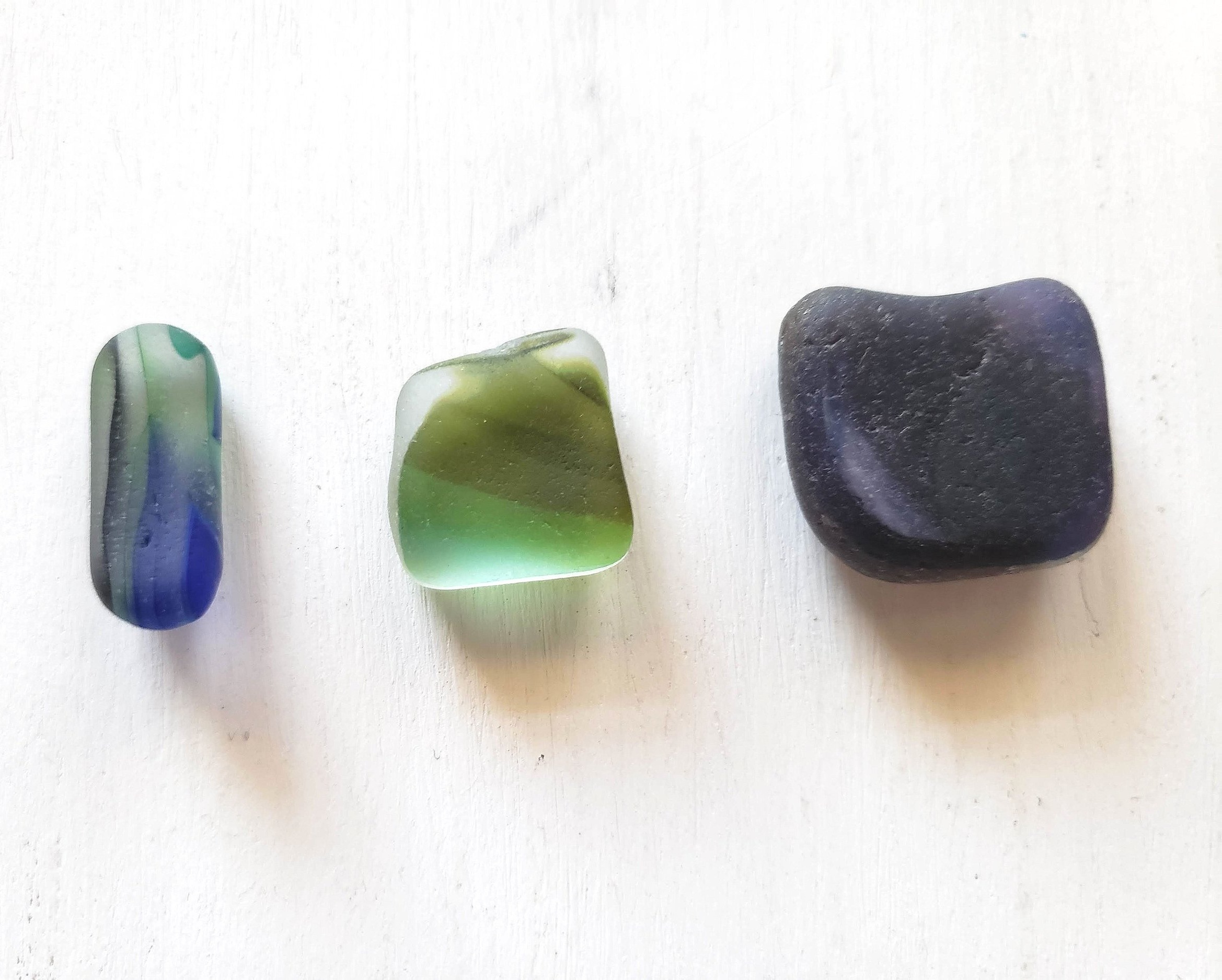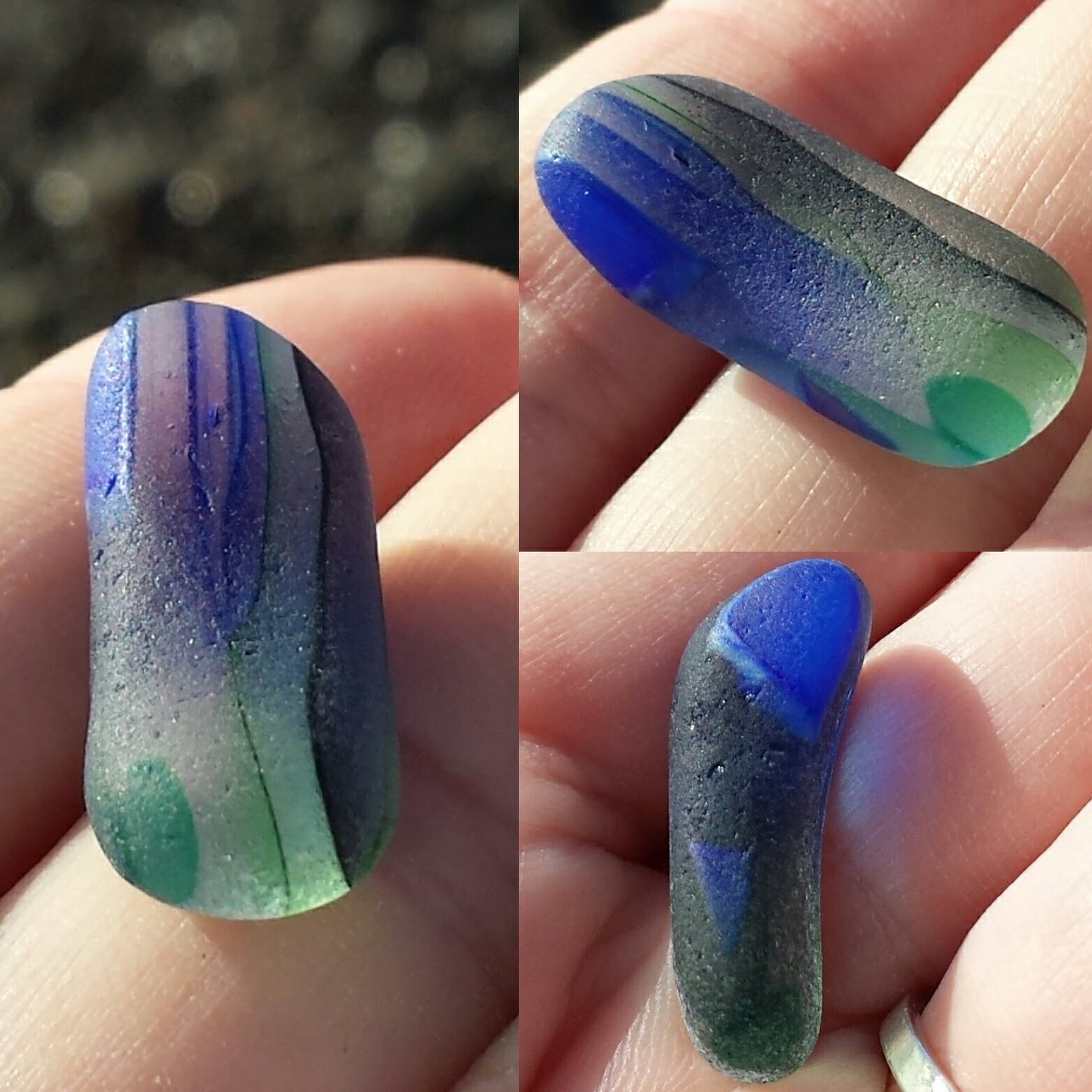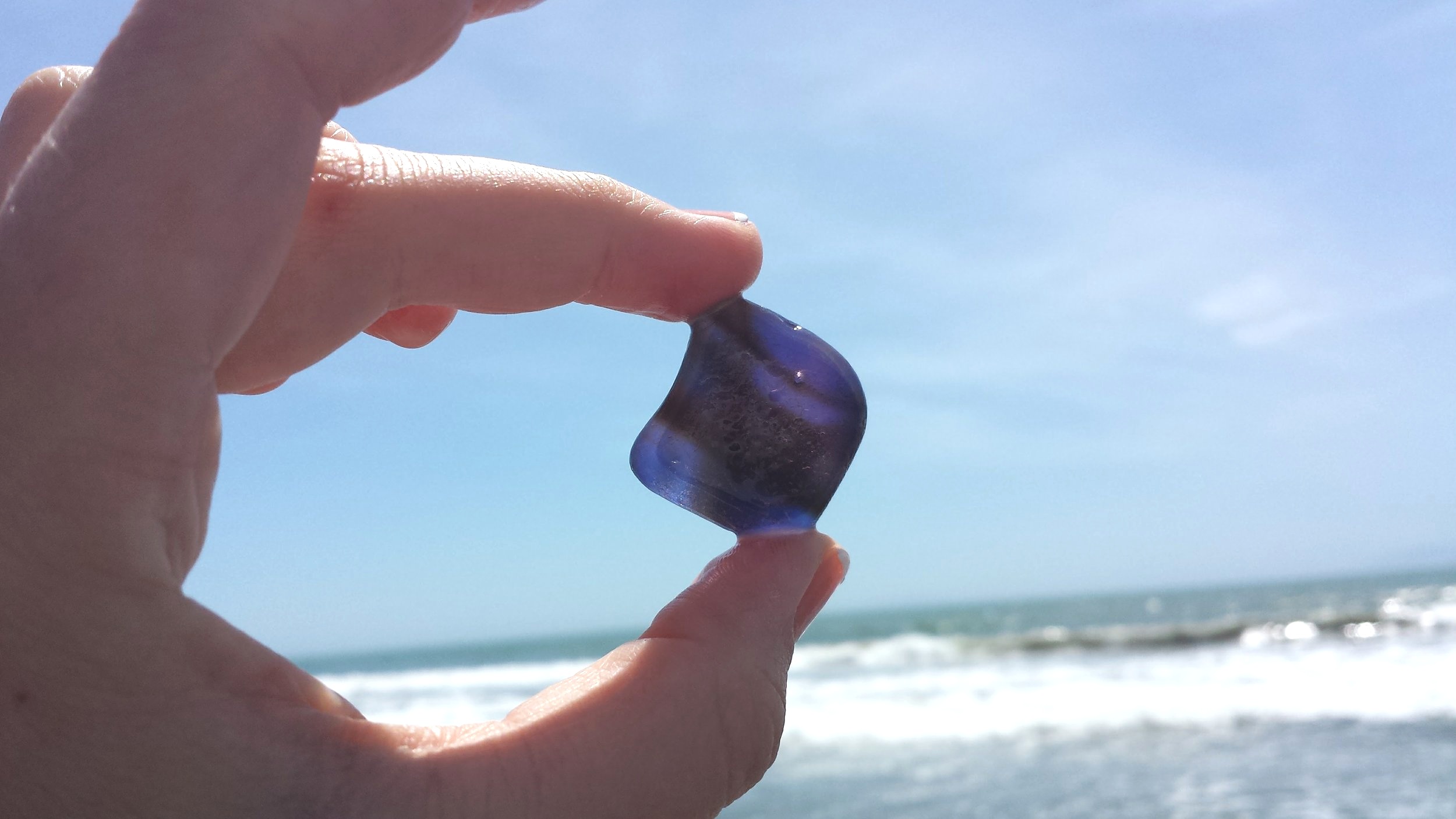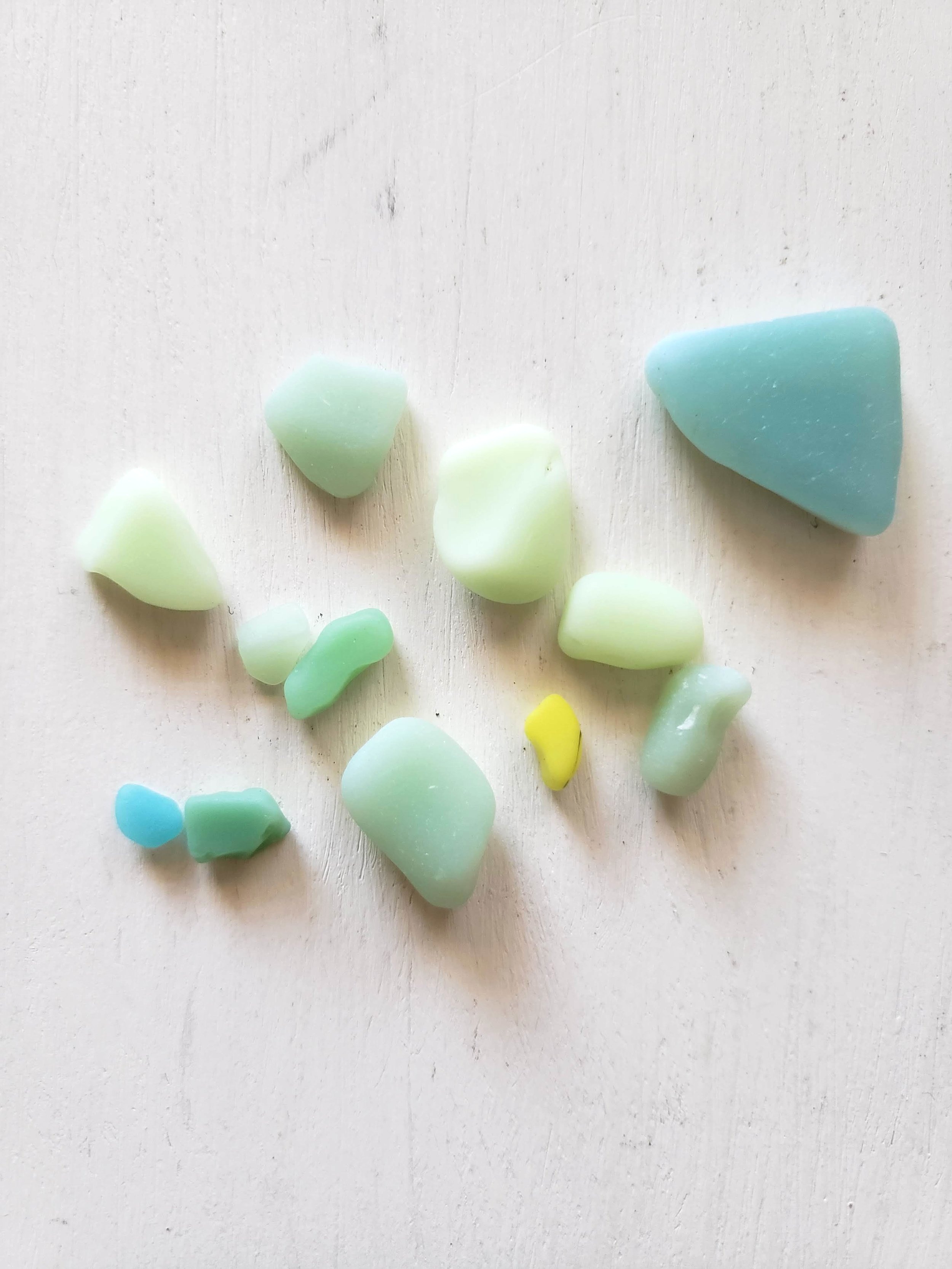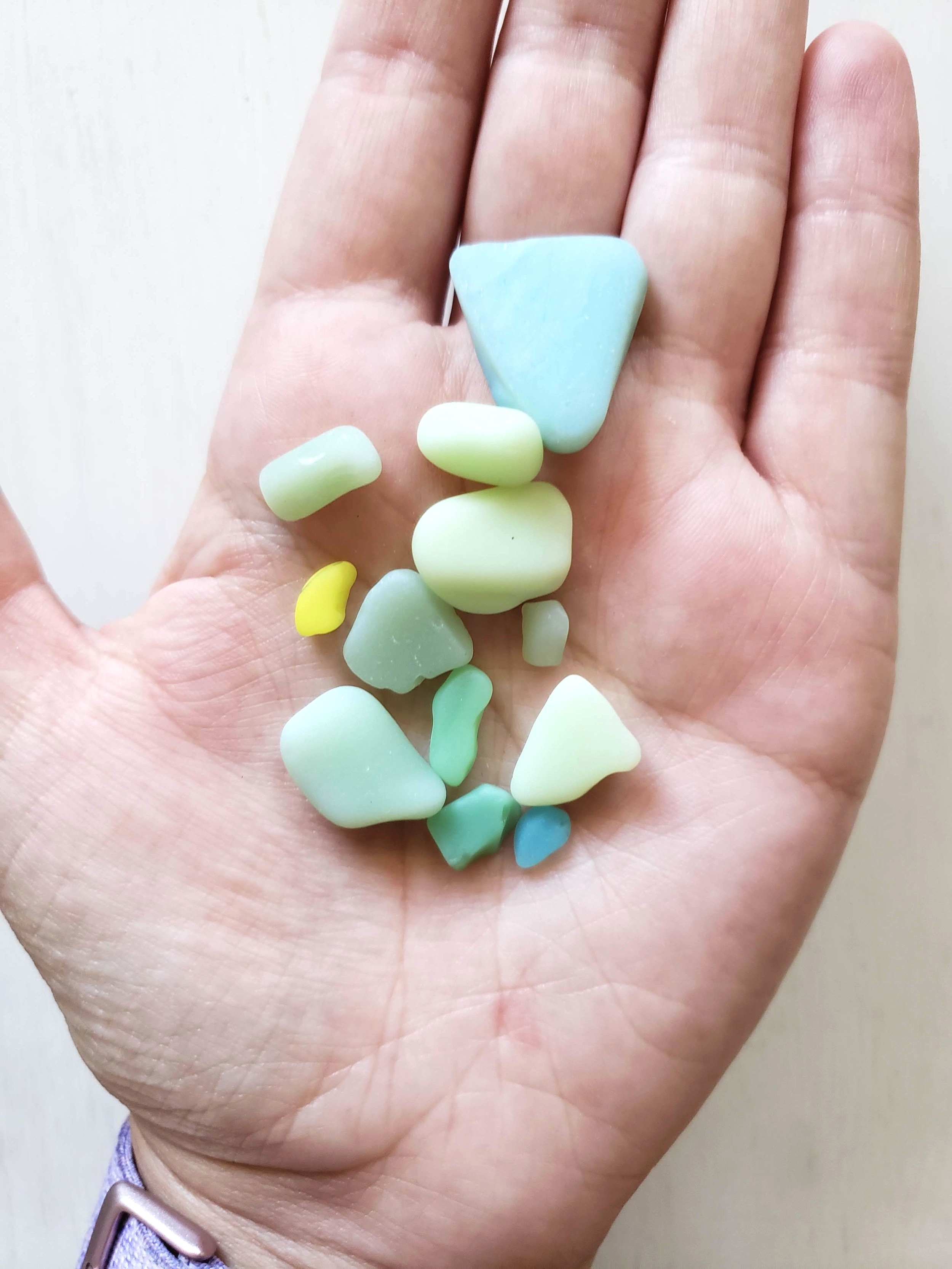Seaglass Origin and Rarity
Natalie Nebilak
As long as there has been glass being made (and time and mechanical erosion by the ocean) there has been seaglass. Some seaglass is really old, others -not so much. Some colors are more common on the east coast than the west, and some places like Seaham, England have "multis" or multicolored seaglass in droves. So today I'm going to dive into my own collection to demonstrate the seaglass rarity we have here on the central-southern coast of California, although this is a pretty good overview of general seaglass rarity around the world. And keep in mind we are only discussing a few here today.
Most Common
WHITE: most white seaglass pieces come from clear glass containers such as mason jars, liquor bottles, maybe some glass food containers or medicine bottles...pretty much any type of clear glass. The glass is only turned "white" after little rocks and sand have pitted the glass giving it a frosted appearance.
KELLY GREEN: ready for a beer? Most kelly greens are the product of beer bottles, Heineken in particular. Glass soda bottles can also make up a portion of these pieces, along with some green wine bottles.
LIME GREEN: I find quite a bit of lime green. Sprite, Lemon-Lime Soda, decorative bottles...
BROWN: again, soda and beer seem to be the main contributors here. Ah, nothing like a little alcohol to bring us all together! Apparently beer and liquor companies like to use dark glass when bottling their precious liquids (protection from light exposure), so these pieces are made of whiskey bottles, root beer, and probably a lot of Coors.
Less Common
Less common, but I still find quite a few of these colors.
SEAFOAM GREEN: I'd say that about one in every 35 pieces I find are seafoam green/blue. Many of the seafoam pieces we find are from the old Coca Cola bottles or old seltzer water bottles. Iron was a naturally occurring substance in the batch sand used to make these glass bottles and is responsible for the greenish-blue tint.
AMBER: Essentially a light brown and most likely beer bottles but have the potential to be very old! Some amber seaglass was once old Lysol and Clorox bottles, old mason jars, tobacco snuff jars, and old medicine jars.
Once in a While
COBALT: This is that dark blue that everyone seems to love. A nice piece of cobalt will almost have a gem-like quality and be very rich and vibrant in color. Cobalts originated as vintage jars and perfume bottles (think Noxzema, Seltzer, Vicks Vapor Rub, Milk of Magnesia...) Most of the cobalts I find are TINY!
OLIVE GREEN: WINE! pardon me while I pour a glass. You'd think that living in California I would be finding a lot more of this color (we have some excellent wineries here). However, it just isn't so. I would say one in 75 pieces I find are olive green.
Rare
YELLOW: Are you ready for a history lesson? Or maybe I should say chemistry lesson. For some reason unknown to me (I'm still searching for the answer), the glass industry decided to replace the manganese they had been using in their soda glass (see Purple/Lavender below) to obtain a colorless product, with selenium. Selenium can also be used in smaller concentrations to decolorize glass. However, when exposed to sunlight this glass will turn a yellow/gold color. In larger concentrations, selenium will give the glass a ruby color.
CORNFLOWER: this is another type of blue glass, but not as deep and rich as cobalt and is in fact older than cobalt glass. Cornflower blues are pre-1900s in age and are most likely the remnants of old Milk of Magnesia bottles and similar products.
PEACH/PINK: I have only a few pieces of peachy seaglass (and other similarly pink in color). Apparently, this peachy glass is also known as Depression Glass and was produced during the depression era because it was cheap to make. Companies such as Quaker Oats used to put pieces of glassware in boxes of food to entice the customer to buy. Hmm, glass in food...yup sounds like a good idea.
Quick Grab It!! -Super Duper Rare!
ULTRAVIOLET: Also known as UV vaseline glass and uranium glass, these pieces of seaglass actually glow under black light! This was achieved by adding uranium dioxide into the glass mixture. The higher the concentration, the brighter the glow! The glass itself is a yellow-green color but can glow a brilliant neon green, red, or even blue under a blacklight. This UV glass was made primarily from 1840 to just before WWII. Now don't get freaked about the use of uranium. Vaseline glass in not harmful to us, but maybe don't go sticking it in your mouth (just to be safe).
RED/ORANGE: Undoubtedly whenever I'm at an event at least 10 people will ask me if I have any red seaglass. Anchor Hocking Royal Ruby Red Glassware was founded in 1937 (barely...December 31st) and produced tablewares, toiletries and cosmetic containers, and also some beer bottles. The reason for the red color is copper, a much cheaper method than using gold as was originally done. Red’s can also be old car brake lights (note the stippling pattern on some of these pieces). Orange, another mythical seaglass creature. Their origination is glassware, decorative glass items, maybe some art glass, and I think also some vintage Avon bottles.
PURPLE/LAVENDER: I only have a few true lavender and purple pieces. The super cool thing about true lavender seaglass is that the glass didn't actually start that way. They where originally a clear glass container (bottle, tableware, doorknob...) composed of soda ash, silica sand, and limestone. When these three ingredients were used to create glass it resulted in light green-blue tint (caused by the iron in the sand). In order to combat this discoloration, manganese was added to the recipe in just the right quantities to even out that blue-green tint. However, after prolonged exposure to the UV light from the sun, the glass began to take on a rather purplish tint (some call it amethyst). The saturation of the purple color depends on how much manganese was used in the original recipe and the length of time exposed to the sun. This technique of adding manganese to glass was most commonly used pre World War One and dates back to as early as the 1820's and as late as the 1930's.
MULTI: multi-colored seaglass is pretty rare where I live (Ventura, CA) and we have only found 3 or 4 since we've been hunting. Multies are made of art glass, vases, pretty things. Santa Cruz has a fair share of it, as does Seaham England (although their glass is very particular to that region and are unlike any other multi)
BLACK: I'd be hard pressed to believe that there is actual black seaglass out there. Mostly what is traditionally regarded as black seaglass is actually really really REALLY dark green or dark brown glass. I have a piece that I call black but when you look close and place a light behind it you can see a hint of green. But I'm still calling it black. These are hard to find PROBABLY because they look just like rocks!
Hmm, looks black right??
It's acutlaly super super dark green. But I'm calling this my one and only piece of black seaglass.
STOPPERS & COOL SHAPES: Once in a blue moon I’ll find something truly magical, an old glass bottle stopper or a bottle top.
MILK GLASS: Opaque glass, commonly known as milk glass. This glass can also be ultraviolet.
Well that's just part MY collection but I'm eager to see what's in yours! Feel free to comment below and tell us about your own beauties, and don't forget to tell us where you're from!


